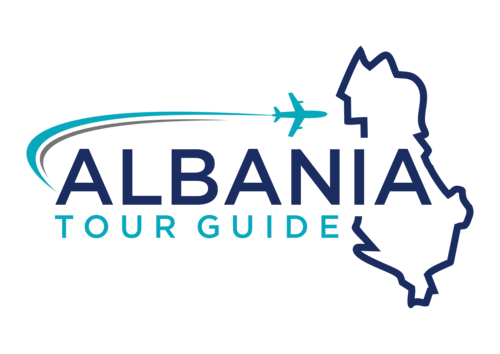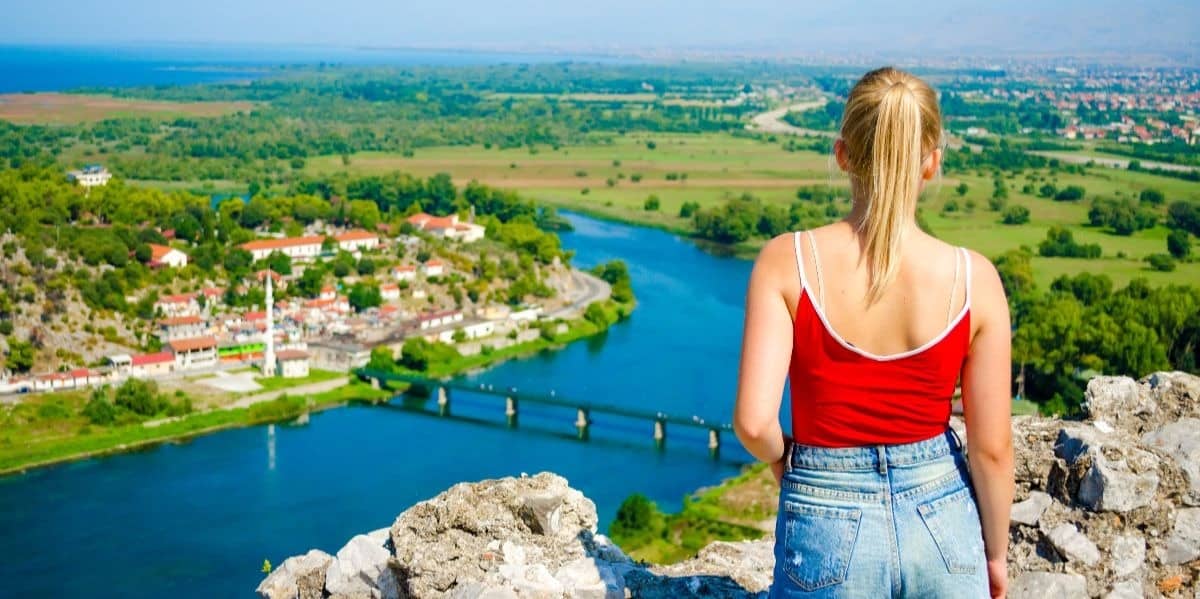

Tirana Tour Guide: Local Private tour guide in Tirana
I am a Tirana Tour Guide, who organizes 1-day, 2-day or multiple day private tours in Albania. I arrange your transportation from Tirana to your sightseeing location. And I am your English speaking guide. So that, you get to experience the most beautiful places in Albania!
Book your Albania Planning Session via Skype now, by using my online scheduler to find a time that’s convenient for you.

Berat Full-Day Tour from Tirana
Berat is the most beautiful town in Albania. This UNESCO city is also known as “the city of a thousand windows”!
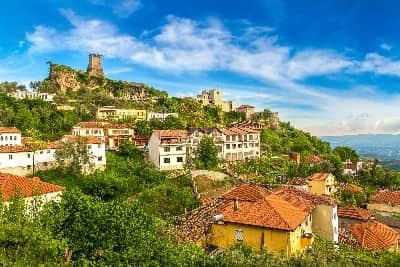
Kruje & Mount Sarisalltik Full-Day Tour from Tirana
Kruje is one of the most famous cities in Albania, because it was the home of the National Hero Skanderbeg.
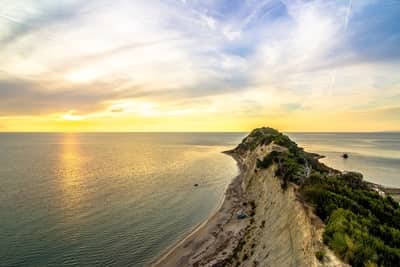
Cape of Rodon Full-Day Tour from Tirana
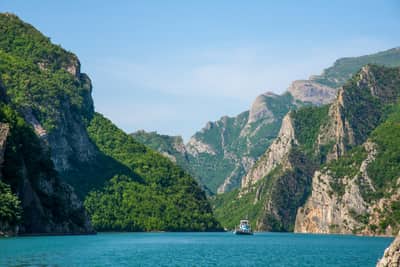
1-day Tour with the Lake Koman Ferry from Tirana
The Lake Koman Ferry is known as “one of the world’s greatest boat trips”. Enjoy stunning views of Lake Koman.

Are you going to Lake Koman?
Do you prefer the ferry boat on Lake Koman or the small boat to the Shala River? The Lake Koman ferry is known as “one of the World’s Greatest Boat Trips”. And the Shala River is famous as “the Thailand of Albania”. What do you prefer?
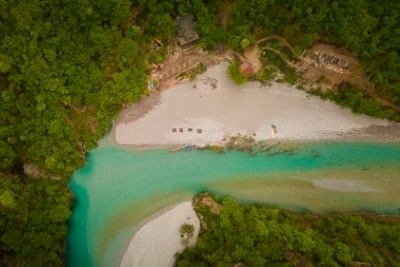
1-Day Boat Tour on the Shala River from Tirana
Take a beautiful boat tour on the magical Shala River. The Shala Rivers is also known as “the Thailand of Albania”.
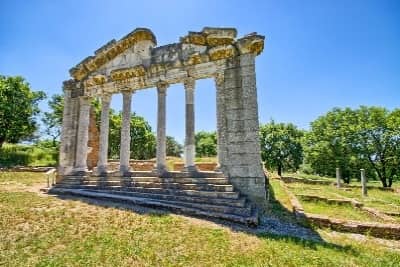
Apollonia and Berat UNESCO tour from Tirana
Apollonia is a beautiful archaeological park & Berat is a UNESCO city with a beautiful old town centre.
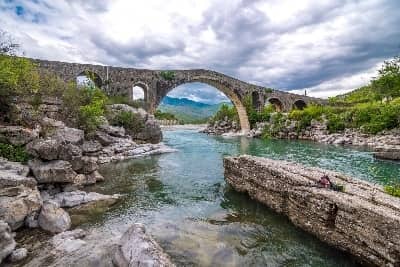
Shkodra Full-Day Tour from Tirana
Shkoder is the culture and artistic city of Albania. Explore Rozafa Castle, the Venetian-style boulevard and much more.

Bunk Art 1 Museum & Cable Car Dajti Mountain
The tour combines the Bunk Art 1 Museum and the Dajti Ekspress Cable Car in one day.
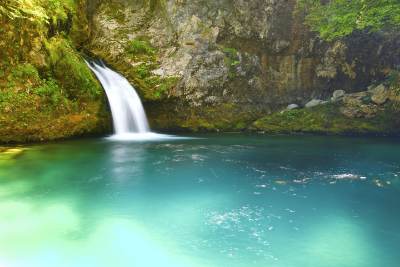
1-Day Blue Eye of Theth Hiking and 4 Wheel Drive Tour from Tirana
The Blue Eye of Theth is a gorgeous, natural pool in the Theth National Park.

Are you going to Theth?
I do now offer a 1-day tour to the Blue Eye of Theth! You can be picked-up from either Tirana or Shkoder and visit the stunning Blue Eye of Theth in only 1 day! Or if you like, I also offer a 2-day tour of Theth, during which you will see the Blue Eye of Theth, the Grunas Waterfall & stay overnight in a guest house. What do you prefer?
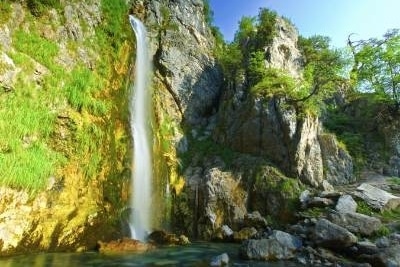
2 Days Theth Hiking and 4 Wheel Drive Tour from Tirana
Explore the Grunas Waterfall, the Blue Eye of Theth & the authentic mountain village on a two day tour from Tirana.
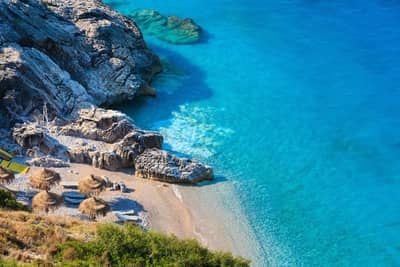
3-Days Albanian Riviera Tour from Tirana, including Ksamil beach
Drive and make stops along the Albanian Riviera, which is one of the most beautiful & untouched coastal lines in Europe!

Ksamil, Saranda, Blue Eye & Butrint 2-Day Tour from Tirana
Visit the highlights in the South of Albania including the Blue Eye of Albania, Saranda city, Butrint UNESCO sight and Ksamil.
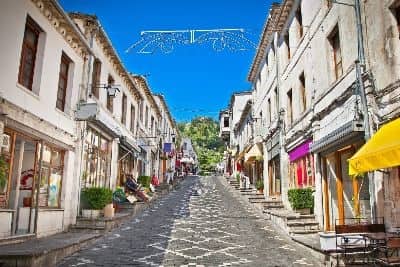
Gjirokaster Full-Day Tour from Tirana
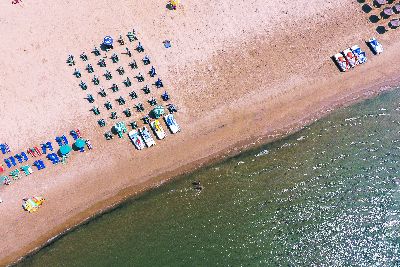
Preza Castle & Durres Beach Full Day Tour from Tirana
On the Preza Castle & Durres Beach tour, you will visit two beautiful places near Tirana in one day.
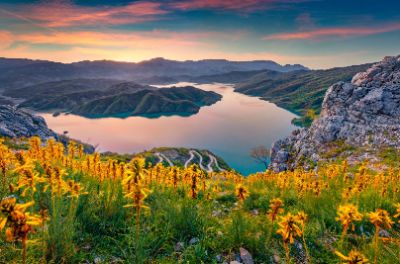
Bovilla Lake & Preza Castle Full Day Tour from Tirana
Hike through the wild beauty of Lake Bovilla & explore the romantic Preza village and castle!
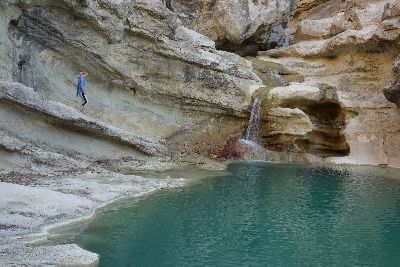
Cyclops’ Eye Natural Wonder Day Tour from Tirana
The Cyclops’ Eye is a stunning natural pool close to Tirana. It is one of the hidden gems of Albania!

Tirana and Kruja Full Day Tour
Explore the landmarks in the capital city of Tirana & visit the castle of Albania’s national hero Skanderbeg.
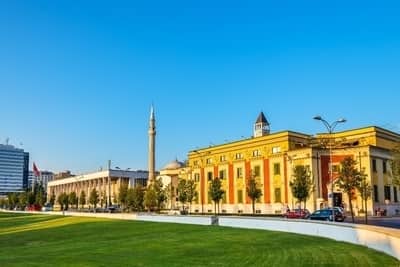
Tirana Walking Tour & Cable Car to Mount Dajti
The tour combines a 3-4 hour walking tour of the city center of Tirana with a visit to the Dajti Express Cable Car.
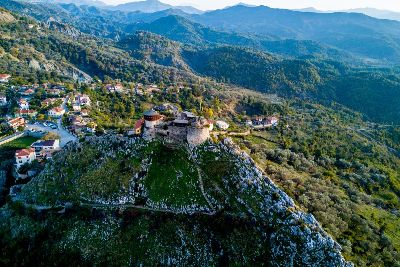
Petrela Castle & Black Cave Full Day Tour from Tirana
If you would like to see the authentic Albania, then the tour to Petrela & the Black Cave is perfect for you.
Why should I book with Tirana tour guide?
Booking a tour with Tirana tour guide will make your tour in Albania much more enjoyable. Because you can discuss your travel plans before your departure and Tirana tour guide will make sure your holiday goes according to plan. Moreover, you do not have to worry about the transportation in Albania. And you get personal recommendations for the hidden gems and local spots that you may not have thought about yet.
Here are some good reasons to book a tour with Tirana tour guide:
- Skype Session with Tirana Tour Guide. If you like, you can discuss you travel plans before your departure with Tirana Tour Guide. You can simply book a Free Albania Planning Session via Skype, by clicking this link. You will get access to my personal calendar and be able to pick a date and time that is convenient for you. In the Albania Planning Session via Skype, we can both make sure that your tour in Albania will meet and exceed your expectations.
- All transportation is arranged for you. Every week, I receive emails from travellers who are wondering how to get from A to B in Albania. In short finding transportatation is one of the most challenging parts of travelling in Albania for a foreigner. If you do not speak Albanian, it can be hard to figure out if there is a bus to your preferred destination, where it departs and at what time. Apart from the mini-busses (in Albanian: Furgon), there are no other forms of public transport. And unfortunately, there are no effective trains in Albania. If you book a tour, all the transportation is arranged for you, no need to worry about the details, simply sit back and enjoy your comfortable trip.
- Visit the hidden gems of Albania. The advantage of travelling with a Tirana based tour guide is that you get to see the places only the locals know about. The locals know the little beaches and secret spots near Tirana, think about the Cape of Rodon, the Bay of Lalzi or the Cyclops’ Eye, these are spots only inhabitants of Tirana know about.
- Private transportation, rather than shared public transportation. All my tours include private transportation, which means that you do not have to share the bus with other passengers. And after the Coronavirus outbreak, private transportation makes your tour that much safer.
- Hotel pick-up or drop-off. If you book a tour with Tirana Tour Guide, you will be picked-up from your hotel in Tirana and dropped-off.
- Tirana International Airport pick-up or drop-off. If the tour starts on your arrival day, then Tirana Tour Guide will pick you up from Tirana International Airport.
- You don’t have to drive in Albania. Driving in Albania can be a challenge as a foreigner. Not all the Albanian drivers follow the rules of the road, therefore, you must be a very experienced, alert and confident driver, if you plan on driving in Albania. Moreover, it can be difficult to find your destination with the limited signage along the roads. Therefore, booking a tour with a private driver will safe you a lot of stress and confusion.
- English speaking tour guide
- Customize your tour. There are some popular tours in Tirana and Albania, that you can book directly via the website. But if you would like to customize the itinerary to meet your needs, that is no problem at all. Simply book a Free Albania Planning Session via Skype, so that Tirana Tour Guide can discuss the travel plans with you.
How can I book with Tirana tour guide?
You can make your booking directly on the website, by pressing any of the Book Now buttons. You will also be able to check if your preferred dates are available in the Booking widget.
However, if you cannot find your preferred dates or you would like to customize the tour, then you can contact Tirana tour guide on contact@albaniatourguide.com .
You can also book a Free Albania Planning Session via Skype, if you would like to discuss your travel plans before booking.
Is a tour with Tirana tour guide private?
All tours with Tirana Tour Guide are private. They include private transportation and a private tour guide. The only transportation you will share, is for instance, a boat trip with the Lake Koman Ferry, which cannot be done privately.
Can I customize my tour itinerary with Tirana tour guide?
You can definitely customize your tour itinerary.
If you would like to discuss your travel plans in Tirana or Albania, you can book a Free Albania Planning Session via Skype. Click this link to pick a date and time that is convenient for you.
What is the cancellation policy with Tirana tour guide?
To receive a full refund, travelers may cancel up to 24 hours before the experience start date in the time zone of Albania. No refunds will be given after that time period. You can check the Terms and Conditions of Tirana Tour Guide here.
How can I contact Tirana tour guide?
You can contact Tirana tour guide by emailing contact@albaniatourguide.com .
Or if you would like to discuss your Tirana tour, you can book a Free Albania Planning Session via Skype. Click here to choose a date and time that is convenient for you.
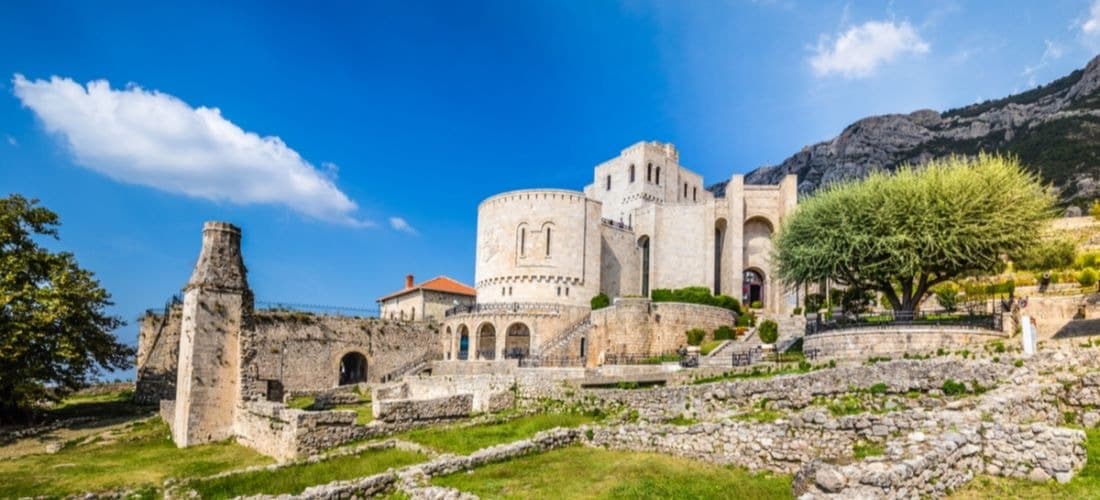
Tirana and Kruja Full Day Tour
Explore two destinations in one day: Tirana and Kruja.
In the morning, the guide will show you Tirana’s city center during a walking tour. You will see highlights like, Skanderbeg square, the Clock Tower, the Pyramid of Tirana and the Presidential Office.
In the afternoon, you will explore the medieval town of Kruje. Kruje is one of the most famous cities in Albania, because it was the home of the National Hero Skanderbeg. You will visit the Castle of Kruje, which has an amazing panoramic view. And you will enter the Skanderbeg Museum and learn how the National hero was able to fight against the Ottoman Empire.
Furthermore, you will see the Ethnographic Museum, which shows a traditional Albanian house. Then, you have the chance to shop for some souvenirs and handicrafts at the Old Bazaar Market.
- Great-value tour: Visit both Tirana and Kruje in one day
- Hotel pickup and drop off in Tirana included
- Entrance fees in Kruje included. Due to the limited time, we will not enter the museums in Tirana.
Highlights - Tirana and Kruja Full Day Tour
- From Kruje Castle, you will have a Panoramic view of Kruje city, Tirana city and the Adriatic Sea.
- Explore communist history in the capital city Tirana. You will visit the Blloku Area and see the former residence of the dictator Enver Hoxha.
- Visit classic highlights in Tirana, like Skanderbeg Square, the Clock Tower and the Pyramid of Tirana.
- Stroll through the New Bazaar Market for local food & visit the Old Bazaar Market for local handicraft products.
- You will visit Tirana & Kruje with a private tour guide and you can customize the itinerary based on your personal interests.
- Private transportation to Tirana & Kruje.
Itinerary - Tirana and Kruja Full Day Tour
The National History Museum
The National History Museum is a landmark in Tirana. The museum displays Albania’s archaeological treasures from Illyrian times until today. The collection includes statues from the Greek and Roman period, as well as a replica of Skanderbeg’s sword. There is also a gallery about the prosecutions during the communist regime. Entrance fee is not included.
Skanderbeg Square
The tour starts at Skanderbeg Square, which is the central square of Tirana. The square is surrounded by the most important buildings in the country, like the National History Museum, the Clock tower, the Palace of Culture and the Et’hem Bey Mosque. The square was designed by three Italian architects: Florentano de Fausto, Gherardo Bosio and Armando Brasini.
Et’hem Bej Mosque
The Et’hem Bej Mosque is a little mosque on Skanderbeg Square in the center of Tirana. The Mosque was constructed between 1790 – 1820, but closed during the communist period. In 1991, the mosque was re-opened without government permission and 10.000 people attended the reopening. The mosque has beautiful frescoes of trees, waterfalls and bridges.
Clock Tower
The Clock Tower is a 35-meter-high tower next to Skanderbeg Square. The tower was built in 1822 during the Ottoman empire. You can climb the tower and have a fantastic view of Skanderbeg Square and the city center of Tirana. Entrance fee is not included.
Bunk Art 2 Museum
Bunk Art 2 is a museum in a large underground-bunker in the center of Tirana. Inside the bunker, you will be guided through the role of the police and security services during the communist period in Albania. It is a fascinating museum about the disturbing communist regime. Entrance fee is not included.
House of Leaves: Museum of Secret Surveillance
House of Leaves is a villa, which was the headquarters of the Albania’s secret service Sigurimi during the communist area. Now, the former HQ has been converted into a museum which displays the bugs, monitoring equipment and wiretapping telephones. The museum gives you a fascinating insight into Albania’s secret service during the communist regime. Entrance fee is not included.
New Bazaar Market
The New Bazaar Market (in Albanian: Pazari i Ri) is a lovely food market, close to the center of Tirana. On the market, you can buy local products, like fruits, honey, handicrafts and homemade food. There are many lovely terraces surrounding the market, where you can enjoy a cup of coffee in the sunshine.
Toptani Shopping Center
The Toptani shopping center is a mall in the city center of Tirana. The highlight is the top floor, where there is a selection of coffee houses and restaurants with panoramic views across the city.
Tanners’ Bridge
Tanners’s bridge is a beautiful stone bridge from the Ottoman period. The bridge was built in the 19th century and it is well-preserved. You can walk across the old bridge and look down at the river below.
Fortress of Justinian
The Fortress of Justinian is also known as Tirana Castle. In the Byzantine era, the castle was in the centre of the city. It was located at a central point, where the main east-west and north-south roads crossed. Today, you can see the 6 metre high remaining wall, of what was once a thriving castle. The wall has been incorporated in the pedestrianized Murat Toptani Street, which leads to the main government road.
Murat Toptani Street
The Murat Toptani Street is a lovely pedestrian street with beautiful plane trees and many terraces. Along the street, there is a 6 metre high wall of the Fortress of Justinian. The Murat Toptani Street leads to the “Boulevard of the Martyrs of the Nation ” with all the Parliament Buildings.
Boulevard of the Martyrs of the Nation
The “Boulevard of the Martyrs of the Nation” is a wide street with many Parliament buildings. Along the street, you can see the Pyramid of Tirana, the National Archaeological Museum, the Presidential Palace and the National Art Gallery. The boulevard was designed by the Italian architect Gherardo Bosio.
National Arts Gallery
The National Arts Gallery shows Albanian paintings from the early 19th century until today. The Albanian Art is unique, because during the communist regime, the government censured the art. Artists needed to create art, that idealised the communist dictator Enver Hoxha. Moreover, some of the “inappropriate” art, is also shown, for which the artists went to prison. Entrance fee is not included.
Pyramid of Tirana
The Pyramid of Tirana is a very controversial building for Tirana. The building was originally designed as a museum about the former dictator Enver Hoxha. However, after the fall of the communism, it served several purposes like convention centre and television station. There is a lot of discussion in Albanian about the refurbishment, repurposing or demolishing of the controversial pyramid.
Presidential Office
The Presidential Office is at the end of the “Boulevard of the Martyrs of the Nation” street. The building is the official workplace of the president and it houses all the staff of the president.
National Archaeological Museum
The National Archaeological Museum displays the Albanian treasures, that were found during archaeological digs. The museum opened after the Second World War. It displays pieces from the pre-history until the Middle Ages. The museum is at the end of the “Boulevard of the Martyrs of the Nation” street. Entrance fee is not included.
Grand Park of Tirana
The Grand Park of Tirana is the central park in the city. The park has a large lake with beautiful paths and running tracks by the lake front. There are numerous playgrounds for children. And lovely coffee houses with a lake view.
Blloku Area
The Blloku Area is the coolest and most vibrant area in Tirana. In the past, the area was used by the communist government and closed off to the general public. Nowadays, it is an area with many restaurants, clubs and coffee houses. If you want to go out at night, you will enjoy Blloku.
Enver Hoxha’s Former Residence
The three-story villa of the former communist dictator Enver Hoxha is in the middle of the Blloku Area. The villa is left just as when the dictator died in 1985. In the past the whole Blloku area was sealed off from the public and only accessible for party elite and their families. Enver Hoxha’s residence is visible from the street, but closed off for the public.
Kruje Castle
The castle of Kruje is an impressive hillside castle, which is located above the city of Kruje. The castle has breathtaking views of the surrounding area and Tirana city in the distance.
The small medieval castle is famous in Albania, because it was the headquarters of the national hero Skanderbeg.
In the 15th century, the powerful Turkish Ottoman empire was conquering the Balkans. However, the Ottoman Turks were not able to break the defences of the Kruje Castle. The rebellion against the Ottomans was lead by Albania’s national hero Skanderbeg. He had serious military skills, and therefore, he was compared to Alexander the Great. Entrance fee is included in the price.
Skanderbeg Museum
The Skanderbeg Museum is one of the most visited & most important museums in Albania. It is named after Skanderbeg, who is Albania’s national hero. Skanderbeg was a warrior and battle commander. He reunited the different Albanian families and tribes. And he created an army that fought against the Ottoman Turks for 25 years.
In the museum, you can experience the story of Skanderbeg’s life and military battles in chronological order. You get to know the story of Albania’s most celebrated national hero! Entrance fee is included in the price.
Ethnographic Museum of Kruja
The Ethnographic Museum of Kruja is a traditional home, where you can get a unique, insight into the traditional Albanian household customs. The house was originally build in the 19th century by the affluent Toptani family. Inside the museum, you will see how self-sufficient the family was. The family produced its own food, honey, leather, weapons and olive oil. It even has a mini hammam and a little watermill. The house’s wall displays beautiful fresco paintings. Entrance fee is included in the price.
Old Bazaar Market
The Old Bazaar is one of the oldest Ottoman-style markets in Albania. The market place was build over 400 years ago and it was recently restored in 2015. In the bazaar, you can buy souvenirs and traditional handicraft items from Albania. Popular products in the market are traditional Albanian clothing, rugs, copper pots, silver jewelry and embroidered tablecloths. It is a lovely market to stroll around or you can enjoy a coffee at one of the cafe’s along the market.
Inclusions - Tirana and Kruja Full Day Tour
- Transport with air-conditioned vehicle
- City tour of Tirana and Kruje
- Hotel pick-up and drop off in Tirana
- Entrance fees to Kruje Castle, the Skanderbeg Museum in Kruje, the Ethnographic Museum in Kruje
Exclusions - Tirana and Kruja Full Day Tour
- Meals & drinks
- Souvenirs
- Tips and gratuities
- Museums in Tirana are not included, due to the limited time.
Pricing & Available Dates - Tirana and Kruja Full Day Tour
To check the pricing and available dates for the Tirana and Kruja Full Day Tour, please click on the Book Now button above.
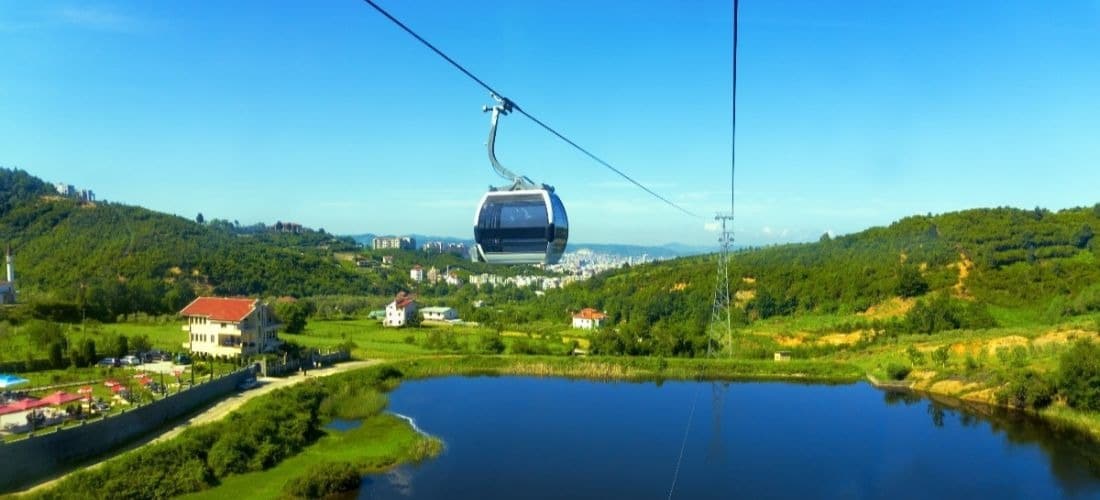
Bunk Art 1 Museum & Cable Car Dajti Mountain Full Day Tour
The tour combines the Bunk Art 1 Museum and the Dajti Ekspress Cable Car in one day.
In the morning, we will visit the Bunk Art 1 museum. The Museum is set inside a massive communist bunker and it has fascinating displays about the communist history. You can hear the former dictator speak, see the dictator’s room in the bunker and walk through the creepy hallways of the bunker.
In the afternoon, we take a 15-minute cable car journey up the Dajti mountain. The views from the cable car and from the cliff are breath-taking. You will have a panoramic view of Tirana city and the Adriatic Sea in the distance.
Hotel pick-up, private tour guide, private transportation, Bunk Art 1 and the Dajti Cable Car are included in the tour.
Highlights - Bunk Art 1 Museum & Cable Car Dajti Mountain Full Day Tour
- The Bunk Art 1 museum is the most innovative museum in Albania. The museum is set in a large communist bunker built by the former dictator Enver Hoxha. You will literally walk through communist history, whilst learning about its cruelty. Bunk Art 1 is impressive and a little scary.
- Take the Dajti Ekspres Cable Car and enjoy the 15 min cable car journey. During the cable car journing, you will enjoy amazing views of the treetops, mountain cliffs and Tirana city in the distance.
- From the Dajti Balcony, you will have stunning panoramic views of Tirana city and the Adriatic Sea.
- You will visit Bunk Art 1 & Dajti with a private tour guide and you can customize the itinerary based on your personal interests.
- Private transportation to Bunk Art 1 & Dajti.
Itinerary - Bunk Art 1 Museum & Cable Car Dajti Mountain Full Day Tour
Bunk’Art 1 Museum
Bunk Art 1 is the best and most innovative museum in Tirana. The museum is located inside a massive communist bunker.
From 1945 to 1992, Albania was ruled by a communist dictator called Enver Hoxha. He constructed 750.000 bunkers in Albania, because he was paranoid and afraid of a foreign nuclear attack on the country. The foreign attack never happened, and the communism regime ended in 1992.
But Albania still has thousands of unused bunkers.
The massive bunker, which accommodates Bunk Art 1, was intended to accommodate the communist dictator and his government if a foreign attack took place. It is a five-story underground bunker complex with over 100 rooms and a multitude of hallways. But it was never used.
Nowadays, the bunker has been converted into a very interesting museum about Albania’s history. You can listen to Enver Hoxha on the phone, see old TV footage, learn about nuclear weapons and see the dictator’s room. You get a unique insight into the dark year under the communist rule in Albania. Simply said, Bunk Art 1 is the most impressive museum in Albania, but it is also a little creepy…
Dajti Express Cable Car
The Dajti Express is an Austrian built cable car in the outskirts of Tirana. You board the cable car at the lower station. The journey to the upper station of the Dajti Express takes around 15 minutes and it is breathtaking.
You fly accross the tree tops, by the mountain cliffs and you can see the little farm houses below. Once you get closer to the top, you will see a view of Tirana city in the distance and the Adriatic Sea at the horizon.
Dajti Mountain
The upper station of the Dajti Cable Car is 1613 metres above sealevel. The view from the upper balcony is impressive. You can see the entire city of Tirana, the Adriatic Sea and the Port of Durres. Albania is a very mountainous country, so you will see various hills and valleys in the distance.
At the top of the cliff, there is the Balcony Restaurant which has floor to ceiling windows and it is the perfect spot for lunch (own expense). You can also go on top of the Dajti Tower Hotel and step out on the viewing terrace or go to the the rotating bar.
At the upper station, you can try your hand at various outdoor activities. There is a little shooting range, mini golf, an outdoor fitness area, horse riding, various playgrounds and a children’s adventure park.
The Dajti Mini Golf and Adventure park has a high robes course and ziplining facilities, this is optional and the fees are not included.
Inclusions - Bunk Art 1 Museum & Cable Car Dajti Mountain Full Day Tour
- Private transportation
- Private tour guide
- Hotel pick-up and drop off in Tirana
- Entrance fees to Bunk Art 1
- Admission Dajti Express Cable Car
Exclusions - Bunk Art 1 Museum & Cable Car Dajti Mountain Full Day Tour
- Meals and Drinks
- Optional entry to: Dajti Mini Golf and Adventure park
Pricing & Available Dates - Bunk Art 1 Museum & Cable Car Dajti Mountain Full Day Tour
To check the pricing and available dates for the Bunk Art 1 Museum & Cable Car Dajti Mountain Full Day Tour, please click on the Book Now button above.

Kruje & Mount Sarisalltik Full-Day Tour
Kruje is one of the most famous cities in Albania, because it was the home of the National Hero Skanderbeg.
You will visit the Castle of Kruje, which has an amazing panoramic view. And you will enter the Skanderbeg Museum and learn how the National hero was able to fight against the Ottoman Empire.
Furthermore, you will see the Ethnographic Museum, which shows a traditional Albanian house. Then, you have the chance to shop for some souvenirs and handicrafts at the Old Bazaar Market.
And finally, we will hike up Mount Sarisalltik for the most breath-taking views and perhaps a transforming experience…
Hotel pick-up in Tirana, transportation and all entrance fees are included.
Highlights - Kruje & Mount Sarisalltik Full-Day Tour
- From Kruje Castle, you will have a Panoramic view of Kruje city, Tirana city & the Adriatic Sea.
- The Ethnographic Museum of Kruja is a highlight, because you will get a unique look at a traditional family home from the 19th century.
- The Old Bazaar Market sells traditional handicraft products and lovely little souvenirs from Albania.
- You will visit Kruje & Mount Sarisalltik with a private tour guide and you can customize the itinerary based on your personal interests.
- Private transportation to Kruje & Mount Sarisalltik.
Itinerary - Kruje & Mount Sarisalltik Full-Day Tour
Pick-up in Tirana
You will be picked up in Tirana at 8:30 and we will drive for around 1 hour to reach Kruje. The city of Kruje is famous in Albania, because it was the home of the National hero Skanderbeg. During the trip, we will visit the Castle of Kruje, the Skanderbeg Museum, the Ethnographic museum and the Old Bazaar. And at the end of the afternoon, we will hike up Mount Sarisalltik for an amazing view.
Kruje Castle
The castle of Kruje is an impressive hillside castle, which is located above the city of Kruje. The castle has breathtaking views of the surrounding area and Tirana city in the distance.
The small medieval castle is famous in Albania, because it was the headquarters of the national hero Skanderbeg.
In the 15th century, the powerful Turkish Ottoman empire was conquering the Balkans. However, the Ottoman Turks were not able to break the defences of the Kruje Castle. The rebellion against the Ottomans was lead by Albania’s national hero Skanderbeg. He had serious military skills, and therefore, he was compared to Alexander the Great.
Skanderbeg Museum
The Skanderbeg Museum is one of the most visited & most important museums in Albania. It is named after Skanderbeg, who is Albania’s national hero. Skanderbeg was a warrior and battle commander. He reunited the different Albanian families and tribes. And he created an army that fought against the Ottoman Turks for 25 years.
In the museum, you can experience the story of Skanderbeg’s life and military battles in chronological order. You get to know the story of Albania’s most celebrated national hero!
Ethnographic Museum of Kruja
The Ethnographic Museum of Kruja is a traditional home, where you can get a unique, insight into the traditional Albanian household customs. The house was originally build in the 19th century by the affluent Toptani family. Inside the museum, you will see how self-sufficient the family was. The family produced its own food, honey, leather, weapons and olive oil. It even has a mini hammam and a little watermill. The house’s wall displays beautiful fresco paintings.
Old Bazaar Market
The Old Bazaar is one of the oldest Ottoman-style markets in Albania. The market place was build over 400 years ago and it was recently restored in 2015. In the bazaar, you can buy souvenirs and traditional handicraft items from Albania. Popular products in the market are traditional Albanian clothing, rugs, copper pots, silver jewelry and embroidered tablecloths. It is a lovely market to stroll around or you can enjoy a coffee at one of the cafe’s along the market.
The Cave of Sarisalltik
In the afternoon, we will hike to Mount Sarisalltik. The mountain cave of Sarisalltik is a religious location in Albania. Pilgrims hike up to the cave, because the journey has a sacred meaning for them.
The cave of Sarisalltik is at a height of 1176 meters and it has the most amazing view of the surrounding landscape. Inside the cave, you can visit the fountain of holy water, the first Albanian mosque and the grave of Sarisalltik, who was a religious leader. You can have a coffee at the cafe and enjoy the stunning views.
Inclusions - Kruje & Mount Sarisalltik Full-Day Tour
- Private transportation
- Private tour guide
- Hotel pick-up and drop off in Tirana
- Entrance fees to Kruje Castle, the Skanderbeg Museum, the Ethnographic Museum and Mount Sarisalltik
Exclusions - Kruje & Mount Sarisalltik Full-Day Tour
- Meals and Drinks
Pricing & Available Dates - Kruje & Mount Sarisalltik Full-Day Tour
To check the pricing and available dates for the Kruje & Mount Sarisalltik Full-Day Tour, please click on the Book Now button above.
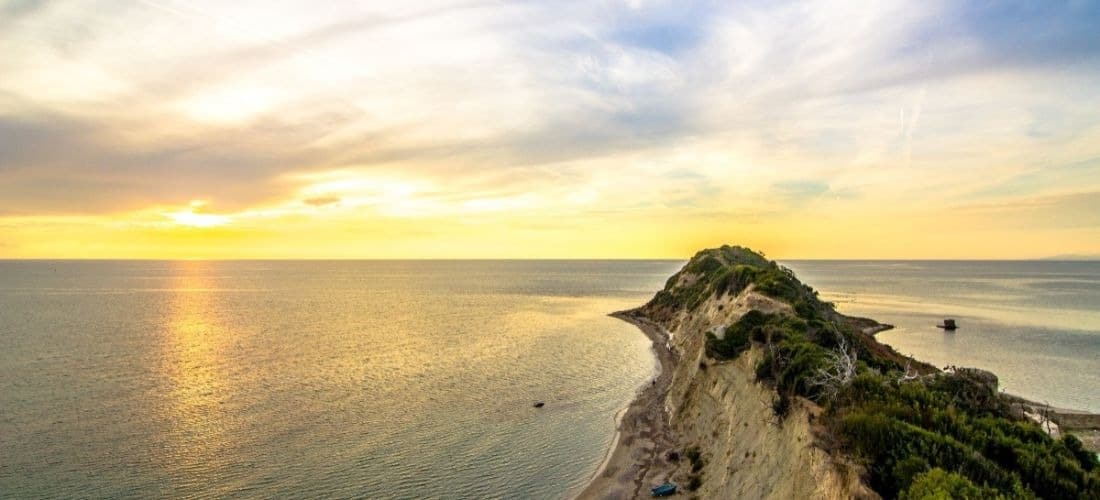
Cape of Rodon Full-Day Tour from Tirana
The Cape of Rodon is a hidden gem in Albania. A beautiful rocky peninsula points into the wild Adriatic Sea.
We will drive from Tirana to the Cape of Rodon, where we will hike for about 45 minutes to reach the stunning Cape of Rodon. We will also visit the Skanderbeg castle located on the peninsula and take beautiful pictures of the nature and the sea.
The cape of Rodon has untouched nature, magnificent views and old bunkers from the communist regime.
On the way back, you will have a few hours of free time to swim and explore the Bay of Lalzi, which is one of the virgin sandy beaches close to the Cape of Rodon.
Hotel pick-up in Tirana, private transportation and all entrance fees are included.
Highlights - Cape of Rodon Full-Day Tour from Tirana
- The Cape of Rodon is a true hidden gem and natural wonder. The rocky peninsula points into the Adriatic Sea and it is a gorgeous location to visit.
- The Bay of Lalzi is one of the quiet beaches in Tirana’s vicinity, which is only known to the locals. You can swim and sunbathe with privacy on this beautiful beach.
- You will visit the Cape of Rodon with a private tour guide and you can customize the itinerary based on your personal interests.
- Private transportation to the Cape of Rodon & the Bay of Lalzi.
Itinerary - Cape of Rodon Full-Day Tour from Tirana
Cape of Rodon
The Cape of Rodon is a natural wonder and it is a hidden gem in Albania. The Cape of Rodon is a rocky peninsula that points into the Adriatic Sea. The cape of Rodon is also known as the Cape of Skanderbeg or “Kepi i Rodonit”.
The cape is completely overgrown by nature and untouched by humans. It takes about 2 hours to drive from Tirana. However, from the parking space, the cape can only be reached by hiking along a trail for about 45 minutes. At the end of the trail, you will see the Cape of Rodon.
From the hill, you will have beautiful views of the lush green cape, which points into the wild sea. From the hill, you can descent to the Cape to visit the Rodoni Castle.
During the communist period, the Cape of Rodon was a restricted area. Since, it served as a military base by the coast. Along the walking trail, you will see numerous bunkers and tunnels, which remind the Albanian people of the strict communist regime of Enver Hoxha.
Rodoni Castle
On the Cape of Rodon, you can visit the Rodoni Castle. The castle is also called Skanderbeg Castle, since it was build by Albanian’s national hero Skanderbeg. Skanderbeg was a military commander, who united the Albanian tribes and led the defence against the invasion of the Ottoman Turks.
Skanderbeg completed the castle around 1452 with the intention to have access to the Adriatic Sea. However, in 1467, the Ottoman Turks destroyed the castle. The castle was later rebuilt by the Venetians after 1500.
Church of St Anthony
The Church of St Anthony is one of the first sights you see, when you arrive to the Cape of Rodon. The church is a beautiful sight, as it has the sea and the beach in the background.
The church was originally built in the 12th century, but it was rebuilt in the 15th century. It has a Romanesque-Gothic style and it was a part of the Franciscan monastery. During the communist regime, the church was used as a military depot, but after the fall of the communism it was restored. There are several beautiful frescoes inside the church.
Bay of Lalzi
The Bay of Lalzi is one of the most natural beaches close to Tirana. Whereas Durres or Shengjin are big coastal towns, Lalzi beach is filled pine trees and white sand.
The Bay of Lalzi is located along the same road to the Cape of Rodon, so it is perfect spot for a stop on the way back to Tirana. You will have 2 hours of free time to walk along the white beach and swim. The beach is enclosed by cliffs in the distance and it is usually quiet in the summer months.
Inclusions - Cape of Rodon Full-Day Tour from Tirana
- Private transportation
- Private tour guide
- Hotel pick-up and drop off in Tirana
- Entrance fees to the Cape of Rodon and Rodoni Castle
Exclusions - Cape of Rodon Full-Day Tour from Tirana
- Meals and drinks
Pricing & Available Dates - Cape of Rodon Full-Day Tour from Tirana
To check the pricing and available dates for the Cape of Rodon Full-Day Tour from Tirana, please click on the Book Now button above.
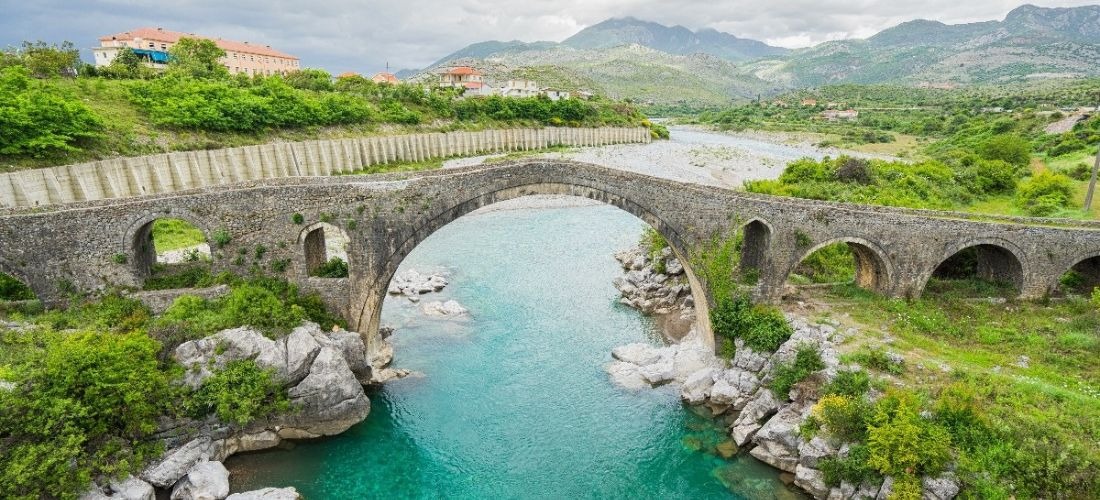
Shkodra Full Day Tour from Tirana
Shkoder is one of the most beautiful cities in Albania. In the morning, you will visit Rozafa Castle. The castle is located on the top of the mountain and it has a stunning panoramic view of Shkoder city and the lake of Shkoder.
Then, you will have the opportunity to visit the Venice Art Mask Factory, which has a collection of unique Venetian Masks. And we make a stop at the Marubi National Museum of Photography, which displays unique Albanian photographs dating back to 1850.
You can also see the Mesi Bridge, which is a beautiful stone bridge build during the Turkish Ottoman empire.
In the afternoon, you will have some free time to explore the Venetian style boulevard, the historical city center or Shkodra Lake.
Hotel pick-up and drop off in Tirana included. All entrance fees to the museums mentioned included.
Highlights - Shkodra Full Day Tour from Tirana
- You will have a Panoramic view of Shkoder city from Rozafa Castle on the hilltop.
- Visit the Venice Art Mask Factory, where the Albanian owner creates unique one-of-a-kind Venetian masks.
- Walk accross the 18th century Mesi Bridge, which was built during the Ottoman Empire.
- You will visit Shkoder with a private tour guide and you can customize the itinerary based on your personal interests.
- Private transportation to Shkoder.
Itinerary - Shkodra Full Day Tour from Tirana
Rozafa Castle
Rozafa castle is a large castle on the top of a hill near Shkoder city. The castle has a spectacular, panoramic view over Shkoder city and the Lake of Shkodra. The Illyrians originally founded the castle in antiquity, but it was later rebuild by the Venetians and the Turkish Ottomans.
There is a famous legend about the castle. Alledgedly, three brothers build the castle during the day, however, during the night the walls would fall down. The brothers were told by an old man, that a human sacrifice was needed to ensure the walls would stand. The brothers made a deal and decided that the wife, who brought lunch the next day, would be sacrificed.
The two older brothers cheated and told their wifes. Therefore, the wife of the youngest brother, Rozafa, was sacrificed. She agreed under the condition that her foot, her hand and her breast would be exposed, so that she could take care of her infant child. You can see a statue of Rozafa at the entrance of the castle’s museum.
Venice Art Mask Factory
The Venice Art Mask Factory is a factory and exhibition of Venetian Masks. The factory was started in 1997 by Edmond Angoni, who is originally from Albania, but spend a long period of time in Venice. Back in Albania, he began creating Venetian masks and turned it into a worldwide factory. The factory has eight shops in Venice and one in Las Vegas, and it sells masks in luxury shops in Dubai and Australia as well.
In the Venice Art Mask Factory, you can see a display of 1700 unique art masks. Each mask is produced by 12 or 13 professionals, who work on the molding, papier-mache, painting and decorations.
The factory produces more than 30.000 masks per year. It is very enjoyable to browse through the beautiful collection of masks. Each mask is a unique work of art. The masks vary in price point, so you might even find a unique souvenir to take home.
Marubi National Photography Museum
The Marubi National Photography Museum is a collection of photos taken by three generations of photographers. In 1850, Pietro Marubbi, an Italian painter and photographer, emigrated from Italy to Shkoder for political reasons. Whilst in Shkoder, he founded a photo business called Foto Marubi. He trained Kel Kodheli, who took over the family business after Pietro’s death and changed his name to Kel Marubi. And later Kel’s son, Gege Marubi followed in his footsteps.
In the Marubi National Photography Museum you can see a collection of 400.000 photographs that tell Albania’s history. The Marubi family photographed significant national events and daily life in Albania. There are portraits of tribal leaders, highland uprisings and influential persons, like Edith Durham.
Mesi Bridge
The Mesi Bridge is a cultural monument to the northeast of Shkoder city. It is a historical bridge that was build in the 18th century, when Albania was ruled by the Turkish Ottoman empire.
Today, it is the largest remaining bridge from the Ottoman period in Albania. The bridge is a touristic attraction and it was voted the top bridge to visit in Albania by Tripadvisor. The bridge is 108 meters long and it has a total of 13 little arches. It is surrounded by the beautiful mountains in the background.
Rruga Kole Idromeno
The Kole Idromeno Street is a famous pedestrian street in the center of Shkoder city. It is a very pretty boulevard with many terraces. The pedestrian street was designed by a local architect and painter called Kole Idromeno. The architect was schooled in Venice and therefore, the boulevard has a very Italian feel.
It has many decorative details like beautiful stones and romantic lighting. The boulevard is a lovely place for strolling, shopping for souvenirs or enjoying a beautiful afternoon on the terrace.
Shkoder
In the afternoon, you will have some free time to explore the city center of Shkoder. If you like, you can visit the Ebu Bekr Mosque, the St. Stephen’s Catholic Cathedral or the Orthodox Cathedral of the Nativity. Or you can simply spend some time strolling along the beautiful historical streets in the city center.
Shkodra Lake
If you enjoy spending time in nature, we can bring you to the Shkodra Lake in the afternoon. The Lake of Shkodra is the largest lake in the Balkan Peninsula. It is located on the border between Albania and Montenegro. It is a calming and refreshing area. You can drive along the road to Shiroka and visit the Buna River delta. The lake has crystal clear water and it is a very beautiful location.
Inclusions - Shkodra Full Day Tour from Tirana
- Transport with a/c vehicle
- Hotel pick-up and drop off in Tirana
- Entrance fee to Venice Art Mask Factory
- Entrance fee to Marubi National Museum of Photography
- Entrance fee to Rozafa Castle
Exclusions - Shkodra Full Day Tour from Tirana
- Meals and drinks
- Souvenirs
- Tips and gratuities
Pricing & Available Dates - Shkodra Full Day Tour from Tirana
To check the pricing and available dates for the Shkodra Full Day Tour from Tirana, please click on the Book Now button above.
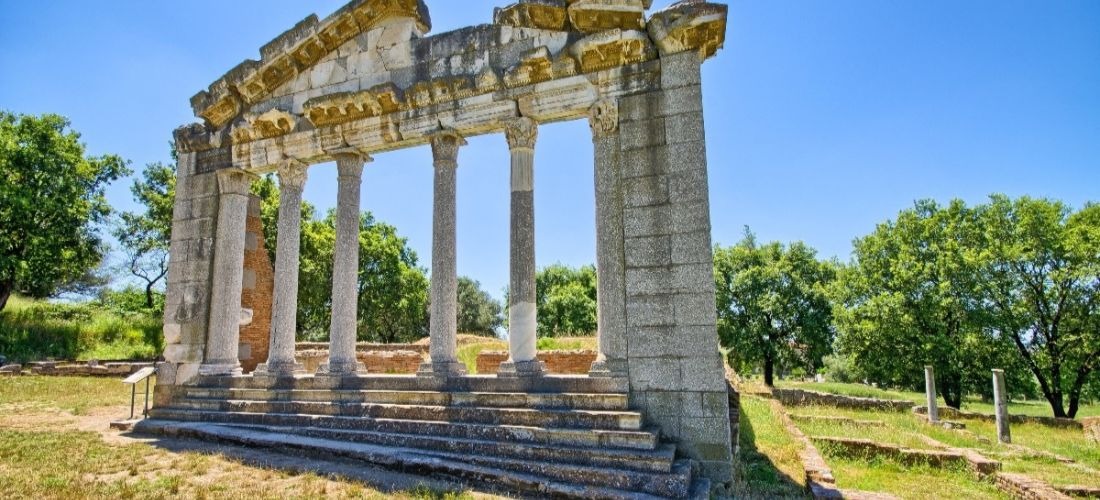
Apollonia and Berat UNESCO tour from Tirana
Apollonia and Berat are the historical highlights of Albania. Apollonia is an impressive archaeological park with ruins from the Greek & Roman times. During the Roman empire, Apollonia was a great and important city. And it was famous for its school of philosophy.
Berat is a historical city in Albania, which is on the UNESCO world heritage list. In Berat, you will explore the historical neighbourhoods of Mangalem, Gorica & Kala. You will visit Berat Castle and the Museum of Iconography. In the late afternoon, you will have some free time to shop for souvenirs, take pictures & stroll through the cobblestone streets.
Hotel pick-up in Tirana, transportation and all entrance fees are included.
Highlights - Apollonia and Berat UNESCO tour from Tirana
- Apollonia is an archaeological park with ruins from the Greek and Roman periods. In the ancient times, the Roman philosopher Cicero called Apollonia “a great and important city” and you can see that today from the impressive ruins.
- The historical center of Berat is a UNESCO World Heritage Site & it is a Museum City in Albania.
- Berat is called the city of a thousand windows, because of the traditional white houses build on the hillside. The traditional Ottoman style houses are well-preserved and beautiful.
- You will have a Panoramic view of Berat city from the Kala Castle on the hilltop.
- You will visit Apollonia and Berat with a private tour guide and you can customize the itinerary based on your personal interests.
- Private transportation to Apollonia & Berat.
Itinerary - Apollonia and Berat UNESCO tour from Tirana
Apollonia Archaeological Park
Apollonia is an archaeological park in center of Albania. In the ancient times, Apollonia was an important Greek city. The city was founded in 588 BC by Greek colonists from Corfu and Corinth. However, it was during the Roman period that the city of Apollonia really flourished.
In the 4th century AD, Apollonia was an important economic city and trade center. The city was known for its famous school of philosophy. Cicero, a famous Roman public speaker, called Apollonia “a great and important city”. And the city was also one of the most important gateways to the Via Egnatia, which was a Roman trade route through the Balkans.
The ruins of Apollonia were re-discovered in the beginning of the 19th century. The park is set of a hilly plateau and it is surrounded by calming nature.
Berat Castle
The Berat Castle is an enormous fortress called “Kala” on the top of the hill in Berat. From the castle, you will have amazing views in all directions and see the historical town and river below.
Within the castle walls, you will see a village-like neighbourhood, called Kala. Until this day, some people are still living within the castle walls. The castle dates back to the 13th century and there are many Byzantine churches within the walls and one Ottoman mosque.
Museum of Iconography “Onufri”
The Museum of Iconography is a museum with religious painting from several Albanian monasteries. The museum is located within the castle walls in the largest church on the premises, called “the Church of the Dormition of St. Mary”. The museum is named “Onufri” after the Albanian fresco and icon-painter.
Mangalem Quarter & Gorica Quarter
Then in the afternoon, we will visit the Mangalem & Gorica Quarters. These are the traditional neighbourhoods build on the side of the hill. You will see hundreds of little white Ottoman-style houses. From the bottom of the hill, it looks like the little houses are stacked on top of each other. Therefore, Berat is called “the city of a thousand windows”. In short, Berat is a very romantic city with an Italian atmosphere.
Inclusions - Apollonia and Berat UNESCO tour from Tirana
- Transport with a/c vehicle
- A guided tour through the Apollonia Archaeological Park
- Hotel pick-up and drop off in Tirana
- Entrance fee to Apollonia
- Entrance fees to the Museum of Iconography ‘Onufri’
- Entrance fee to the Castle of Berat
Exclusions - Apollonia and Berat UNESCO tour from Tirana
- Meals and drinks
- Personal expenses
- Tips and gratuities
Pricing & Available Dates - Apollonia and Berat UNESCO tour from Tirana
To check the pricing and available dates for the Apollonia and Berat UNESCO tour from Tirana, please click on the Book Now button above.
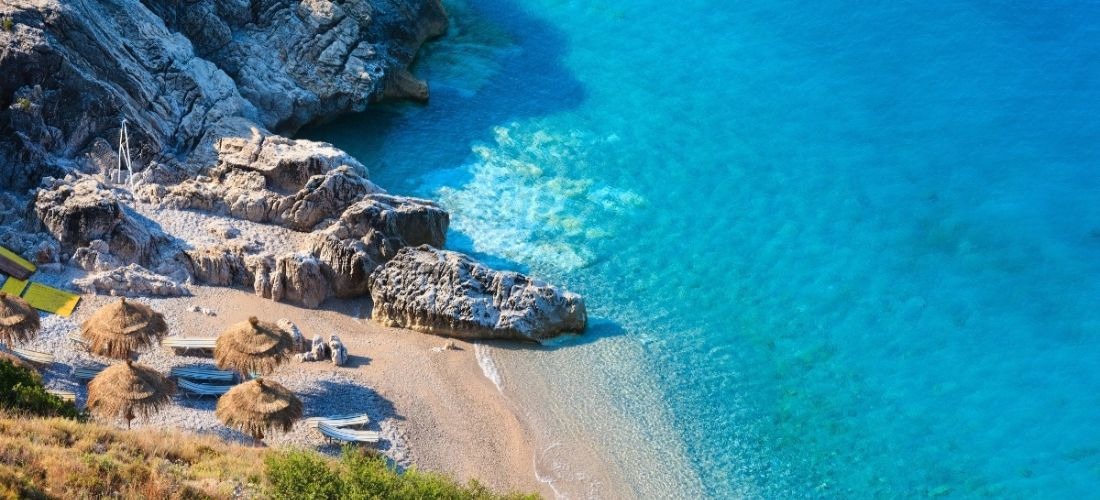
3 day Albanian Riviera Tour from Tirana, including Ksamil beach
The Albanian Riviera is one of the most beautiful coastal areas in Europe. Yet many tourists are not yet familiar with the stunning beaches of along the Ionian Sea, therefore, it remains quiet and untouched.
On the tour, you will visit the most gorgeous beaches of the Albanian Riviera. You will explore touristic highlights like the Blue Eye of Albania and Ksamil beach. And see hidden gems like Zvernec Island and Jala beach. Moreover, the tour guide can customize the experience for you, to meet your preferences.
- Spectacular views along the Albanian Riviera coast
- Plenty of free time to swim and sunbathe at the beaches
- Great-value tour: includes accommodation, breakfast, and entrance fees
- Comfortable round-trip transport from Tirana by private vehicle
Highlights - 3 day Albanian Riviera Tour from Tirana, including Ksamil beach
- See the most isolated and breathtaking beaches of the Albanian Riviera, one of Europe’s last undiscovered coastlines.
- Visit Ksamil beach, the “pearl of the Albanian Riviera” and swim to one of the four little uninhabited islands in the sea.
- The Blue Eye of Albania is a magical, natural wonder. The spring pumps ice cold water up to the surface with enormous force and due to its bright blue color it resembles a human eye.
- The Llogara Pass is the highest point on the coastal road along the Albanian Riviera. From the Llogara Pass (1043 meters), you have an amazing view of the Ionian Sea and the beaches.
- Gjirokaster city is a UNESCO World Heritage Site. The city has stunning stone houses from the Ottoman period and a classic bazaar market.
- You will visit the Albanian Riviera with a private tour guide and you can customize the itinerary based on your personal interests.
- Private transportation to the Albanian Riviera.
Itinerary - 3 day Albanian Riviera Tour from Tirana, including Ksamil beach
Day 1: Durres, Vlore beach, Zvernec Island, Llogara Pass & the Albanian Riviera
Durres
After departing Tirana, we stop for a short coffee break in Durres. Durres is one of the most famous seaside cities in Albania, because it is only 45 minutes from the capital city Tirana. We will have a coffee in a cafe with seaside view towards the Adriatic Sea. And we will pass by the Roman Amphitheathre of Durres and the Venetian Tower for about 30 minutes.
Roman Amphitheatre of Durres
The Roman Amphitheatre of Durres was build in the 2nd century AD. At the time, Durres was called “Dyrrachium” and it was a part of the Roman empire. The Roman Emperor Trajan was leading the empire and Rome was flourishing.
The Roman Amphitheatre of Durres used to host gladiator spectacles and other events. It was an attraction for the citizens, travelers and merchants. The theatre could seat approximately 15000 to 18000 spectators. The theatre was re-discovered only recently in 1966. We will walk along the pathway above the theatre, from where you can look down onto the arena.
The Venetian Tower of Durres
The Venetian Tower of Durres is a large round tower which remains of the former Durres Castle. The castle was initially build in the 5th century by the Byzantine Emperor Anastasius. The Venetians extended the castle in the first half of the fiftheenth century, when Durres was ruled by the Republic of Venice. Today, few structures of the castle remain, only the tower and one ancient wall can be seen.
Vlore Beach
After visiting Durres, we drive south towards the large coastal city Vlore. Vlore is a very popular and large beachside city. It is also the starting point of the Albanian Riviera, which leads from Vlore southwards to Saranda. The city is built around a large horseshoe bay in the sea. Along the bay, there is a popular beachside promenade called Lungomare. Along this promenade, you can find many shops, restaurants, clubs, coffee houses and bars.
Sightseeing at Zvernec Island
After spending some time at Vlore beach, we will make a 30 minute stop at Zvernec Island. Zvernec Island is a little island in the Narta Lagoon. A long bridge leads you from the mainland to Zvernec Island. On the island, you can visit the little Zvernec monastery. The island is a beautiful location to make pictures.
Overnight stay in a 3-star hotel in Vlore
Day 2: Driving along the Albanian Riviera, including Llogara Pass, Dhermi beach, Jale beach, Borsh beach, Porto Palermo, Saranda and Ksamil beach
Breakfast at the hotel in Vlore
Llogara Pass
From Vlore, we will start our drive along the coastal road in the direction of Saranda and make a stop at the Llogara Pass. The Llogara Pass is a mountain pass on the coastal road. It is the highest point on the coastal road, at a height of 1027 meters. It has a beautiful viewpoint, where you can make a stop to take pictures. From the pass, you will have a spectacular view of Palase beach, the Dhermi village and the Ionian Sea.
After visting the Llogara Pass, we will drive down the winding road towards the most beautiful beaches of the Albanian Riviera. The riviera has Mediterraenean villages, historical castles, Orthodox churches, white beaches, hidden caves and hundreds of olive threes.
Dhermi beach
Dhermi beach is one of the most famous beaches in the Albanian Riviera. Dhermi is a lovely little village with hillside houses and a long stretch of beach. During the summer months, it attracts young people and it has a vibrant atmosphere. We will stop to relax and swim in the sea, before continuing our journey.
Jala beach
Jale beach is a little beach village in the middle of the Albanian Riviera. The beach of Jale is known for its incredibly clear water. The beach is surrounded by hills on both sides and it is usually one of the quieter spots in the Albanian Riviera. You will have some free time to explore the beach.
Himare beach
We transfer to the village of Himare. Himare is a larger village in the middle of the Albanian Riviera. There is a traditional village on the hillside, from where you can look down onto the beach and sea. There is a small walking tour of the old village, which is on the hill. You can see some of the traditional houses, which are on the hillside. Moreover, since the village is on the hill it offers a beautiful view towards the Ionian Sea.
Porto Palermo and the Castle of Ali Pasha
Porto Palermo is a large blue bay in the Albanian Riviera. In the middle of the Bay of Porto Palermo, you can visit the Castle of Ali Pasha.
The castle of Ali Pasha is a triangular-shaped fortress on a little island in the Bay of Porto Palermo. The castle is very picturesque and from the rooftop, you have a stunning view of the sea.
Although, many guidebooks state that the castle was build by Ali Pasha, the Albanian governor during the Ottoman empire. It is actually not true, and the castle was build by the Venetians. Because it gave the Venetians easy acccess by sea and it has the same triangular design as the Venetian castle in Butrint.
It is very likely that the written history was changed during the communist period. The communists wanted to believe that the Albanian Ali Pasha constructed the castle. Because it is more in line with the communist nationalist ideas. During the communism, the castle was used as a Soviet submarine base.
Borsh Beach
The beach of Borsh is an impressive sight, because the beach is extremely long. You can choose to stay amongst other people, close to the restaurants. Or you can walk along the beach to be by yourself. The beach has perfect clear blue water and there is a good restaurant at the beach as well.
Saranda
Saranda is a vibrant coastal city in the south of Albania, close to the Greek border. The city is often called “the unofficial capital of the Albanian Riviera”. The large coastal city has a variety of restaurants, bars, clubs and coffee houses. In the evening, the entire city lights up and you can walk along the promenade by the water.
Ksamil
Ksamil beach is a paradise-like beach in the South of Albania. Therefore, the Albanian people describe Ksamil beach as “the pearl of the Albanian Riviera”. Without a doubt, Ksamil beach is the prettiest beach in the country. The beach is set on a little peninsula with perfect white sand. And the water in the bay is a bright green colour and the clearest water you have ever seen.
At Ksamil beach, there are four little islands in the sea close to the beach. The most famous are the twin islands, which are connected to each other by a narrow strip of land. If you have always wanted to visit an uninhibited island, this is your chance. From the beach, you can swim to the nearest island. Or you can rent a boat or kayak to visit the islands, which are further away.
Overnight stay in a 3-star hotel in Ksamil
Day 3: The Blue Eye of Albania & Gjirokaster UNESCO sight
Breakfast at the Hotel in Ksamil
Blue Eye of Albania
The Blue Eye of Albania is one of the most beautiful places to see in Albania. The Blue Eye is a natural fresh water spring. The natural spring pumps bright blue water to the surface of the river. The Blue Eye has become a touristic attraction, since the water of the spring is a magical blue colour. The water is so bright, that you won’t believe it is all natural.
Moreover, the spring resembles a human eye. The dark underwater cave looks like the black pupil of a human eye. And the bright blue water looks like the iris of a human eye. If you dare, you can jump into the Blue Eye spring, which is more than 50 metres deep. But bare in mind that the water is ice cold all year long.
Gjirokaster city
Gjirokaster is a historical city, which is on the UNESCO heritage list. Walking through Gjirokaster gives you an insight into what the city was like during the Turkish Ottoman Empire. The city has typical stone houses and cobble stone streets. Therefore, Gjirokaster is also knows as the “stone city”.
The city of Gjirokaster is known in Albania as a “museum city”, because it has beautiful historical buildings everywhere. It is a lovely city to stroll through.
Gjirokaster Castle
The Gjirokaster Castle is a large fortress on the top of a hill in the city. The fortress has a spectacular view of the historical city and the traditional stone houses of Gjirokaster. It is one of the biggest hilltop castles in the Balkans and it therefore dominates the city.
The castle was originally build in the 12th century by the local Byzantine government. But it was renovated and additions were made during the Byzantine rule, the Ottoman empire and the government of King Zog. From the 1930 onwards, it was mainly used as a prison for people who were resistant against the government.
Old Bazaar of Gjirokaster
The Old Bazaar of Gjirokaster is the traditional market place in Gjirokaster. The bazaar was originally build in the Middle Ages. There are a variety of craftsmen, souvenir shops and coffee houses along the Bazaar. You can buy handmade wooden pieces, handwoven rugs and delicate lace items. The street of the Bazaar is made of cobblestones and it set on a steep hillside.
Inclusions - 3 day Albanian Riviera Tour from Tirana, including Ksamil beach
- Private transportation
- Private tour guide
- Hotel pick-up and drop off in Tirana
- 1 night stay in 3-star hotel in Vlore
- 1 night stay in 3-star hotel in Ksamil
- 2 x breakfast
Exclusions - 3 day Albanian Riviera Tour from Tirana, including Ksamil beach
- Lunch and Dinner
- Tips and gratuities
Pricing & Available Dates - 3 day Albanian Riviera Tour from Tirana, including Ksamil beach
To check the pricing and available dates for the 3 day Albanian Riviera Tour from Tirana, including Ksamil beach, please click on the Book Now button above.

Gjirokaster Full-Day Tour from Tirana
During the Gjirokaster Full-Day Tour from Tirana, you will have the chance to see the UNESCO heritage city in detail.
You will be picked-up from your hotel in Tirana by our guide. Once in Gjirokaster, you will see the highlights of the city, including the Gjirokaster Castle, the Old Bazaar Market, the Cold War Tunnel & the Museum of Weapons.
In the afternoon, you can choose to visit Zekate house or Skenduli house to get a unique insight into a traditional Ottoman-style house.
Gjirokaster is one of the most beautiful historical towns on Albania, and you will have a full-day tour to explore its highlights. You tour guide can customize the program to meet your interests.
Highlights - Gjirokaster Full-Day Tour from Tirana
- Gjirokaster city is a UNESCO World Heritage Site. The city has stunning stone houses from the Ottoman period.
- Visit Gjirokaster castle and enjoy a Panoramic view of Gjirokaster city and the typical historical houses.
- Shop for unique handicraft products on the Old Bazaar market.
- You will visit Gjirokaster with a private tour guide and you can customize the itinerary based on your personal interests.
- Private transportation to Gjirokaster.
Itinerary - Gjirokaster Full-Day Tour from Tirana
Gjirokaster city
Gjirokaster is a historical city, which is on the UNESCO heritage list. Walking through Gjirokaster gives you an insight into what the city was like during the Turkish Ottoman Empire. The city has typical stone houses and cobble stone streets. Therefore, Gjirokaster is also knows as the “stone city”.
The city of Gjirokaster is known in Albania as a “museum city”, because it has beautiful historical buildings everywhere. It is a lovely city to stroll through.
Gjirokaster Castle
The Gjirokaster Castle is a large fortress on the top of a hill in the city. The fortress has a spectacular view of the historical city and the traditional stone houses of Gjirokaster. It is one of the biggest hilltop castles in the Balkans and it therefore dominates the city.
The castle was originally build in the 12th century by the local Byzantine government. But it was renovated and additions were made during the Byzantine rule, the Ottoman empire and the government of King Zog. From the 1930 onwards, it was mainly used as a prison for people who were resistant against the government.
Inside the castle, you can visit the Museum of Arms, which displays arms used against the Italian occupaction, the German occupacion and the Albanian Independence.
Old Bazaar of Gjirokaster
The Old Bazaar of Gjirokaster is the traditional market place in Gjirokaster. The bazaar was originally build in the Middle Ages. There are a variety of craftsmen, souvenir shops and coffee houses along the Bazaar. You can buy handmade wooden pieces, handwoven rugs and delicate lace items. The street of the Bazaar is made of cobblestones and it set on a steep hillside.
Skenduli House
Skenduli House is a highlight for visitors to Gjirokaster. It is an original family house, which is more than 300 years old. During your visit, you will get a unique insight into what life was like for a rich family during the Ottoman period. The house has 9 fireplaces, 6 bathrooms, 12 rooms, 44 doors, 64 windows and 4 hamam turkish baths.
The house has been owned by the same family for generations. The family will show you around the house and tell you stories about it’s history. One of the highlights is the room used for wedding ceremonies, with beautiful stained glass windows, carved wooden ceilings and a fireplace decorated with pomegranates, which symbolize fertility.
Cold War Tunnel in Gjirokastra
The Cold War Tunnel is a giantic bunker underneath the castle of Gjirokaster. It was build by the former communist dictator Enver Hoxha. The dictator was paranoid about a foreign invasion or a nuclear attack.
In fact, he was so convinced an attack was eminent he constructed 750.000 bunkers all over Albania. The Cold War Tunnel bunker was constructed in secret in the 1960s, and it remained a secret for the locals until the 1990s.
The Cold War Tunnel is 800 m long and it has 59 rooms, therefore, it could hold up to 300 people if needed. The bunker is empty, but the use of the rooms have been displayed on the doors. There were rooms for government ministries, interrogators, party elites, power generation, water storage, sleeping, de-contamination and air filtration.
Museum of Weapons Gjirokastra
Inside the castle walls of Gjirokastra’s castle, you can visit the Museum of Weapons. The museum site was originally a prison. Albania’s King Zog constructed the prison in 1932. During the second world war, the prison was used by the Italian and German forces. After the war, the communist regime, used the prison to hold political prisoners.
The Museum of Weapons displays arms used by from the Albanian Independence struggle in 1912 and from the struggle agains the Italiean and German occupactions from 1939 to 1944.
Zekate House
Zekate House is a historical town house in Gjirokaster city. It is a beautiful example of a traditional tower house. The house was build in 1812, and it said to be “one of the greatest examples of Gjirokaster architecture in the Ottoman style”. Impressive houses like Zekate House, used to only belong to the wealthy people, like government officials and merchants.
Inside the house you can see the original interior and imagine what it was like to live there during the Ottoman period. There are beautiful stained-glass windows, wooden ceilings and wall frescoes.
Obelisk Monument of Gjirokaster
The Obelisk is a monument located on the highest peak of the city of Gjirokaster. The monument is a symbol of education in the Albanian language.
For many centuries, Albania was a part of the Turkish Ottoman empire. Therefore, education in the Albanian language was forbidden for a long period of time. The Obelisk monument is located near location of the first Albanian language school in Gjirokaster, which was opened in 1908. At the time it was very dangerous to open an Albanian language school, particularly for the teachers, who worked there.
Since the Obelisk monument is located on the highest peak in the city of Gjirokaster, it has amazing views. You can see the old city and the typical stone houses below.
Cerciz Topulli Square
Cerciz Topulli Square is a historical square in Gjirokaster. It is named after the national hero Cerciz Topulli, who fought against the Ottoman Turks in the early 20th century. He was mainly known for killing the Ottoman commander Bimbashi in 1908. Shortly after in 1912, Albania became independent and he fought to protect the Albanian territory from the foreign invators. There is a statue of the hero on the square.
Ethnographic Museum of Gjirokastra
The Ethnographic Museum gives you an insight into the traditional lifestyle of a wealthy family in Gjirokaster. The museum’s building is on the location, where the former dictator Enver Hoxha’s childhood home was. However, the original building was destroyed by a fire. Inside the museum you can see a display of artifacts, household items, folk costumes, clothing and kitchenware from the past.
Ali Pasha Bridge
In 1811, the city of Gjirokaster as ruled by the Ottoman Governor Ali Pasha. During his rule, he constructed a 12 kilometre long aquaduct, which brought drinking water to the city from the Sopot Mountain. In 1932, the aqueduct was mostly demolished, but one section in the Manalat Quarter still stands. The bridge is known as the “Ali Pasha Bridge”, the “Manalat Bridge” or the “Dunavat Bridge”. It is a 30 minutes hike from Gjirokaster and an off-the-beaten-path attraction for visitors.
Inclusions - Gjirokaster Full-Day Tour from Tirana
- Transport with a/c vehicle
- City Tour of Gjirokaster
- Hotel pick-up and drop off in Tirana
- Entrance fees to the museums described in the itinerary
Exclusions - Gjirokaster Full-Day Tour from Tirana
- Meals and drinks
- Tips and gratuities
Pricing & Available Dates - Gjirokaster Full-Day Tour from Tirana
To check the pricing and available dates for the Gjirokaster Full-Day Tour from Tirana, please click on the Book Now button above.
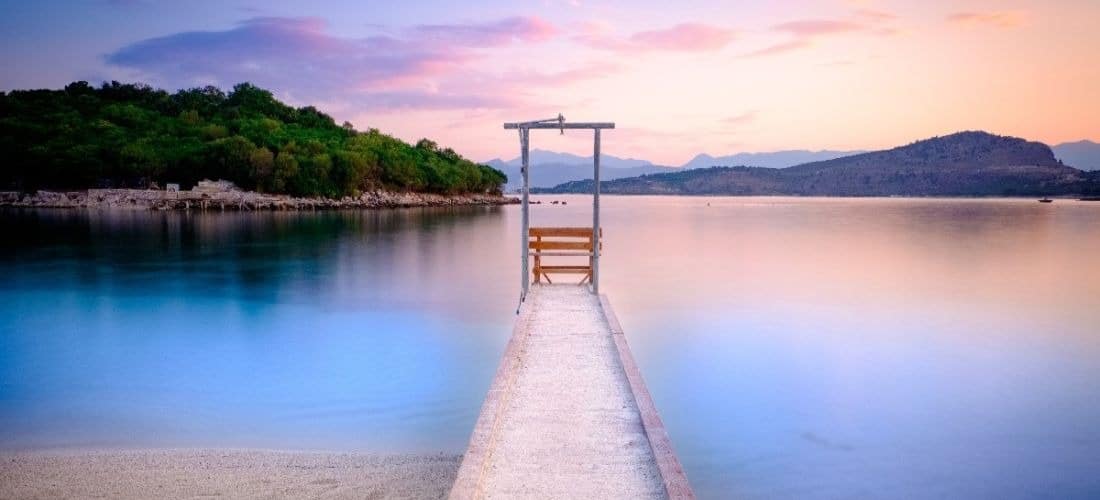
Butrint, Saranda, Ksamil, Blue Eye Two Day Tour from Tirana
You will visit the highlights in the South of Albania including the Blue Eye of Albania, Saranda city, Butrint UNESCO sight and Ksamil beach.
On day one, you will visit the Blue Eye spring. The Blue Eye is a natural spring, with bright blue water. Due to its magical bright colour, is is one of the most attractive touristic sights in Albania.
Afterwards, you will have some free time in the coastal city Saranda, where we will stay overnight.
On day two, we will visit Butrint UNESCO sight. You will get a guided tour of the archeaological park.
Afterwards, you have a few hours of free time at Ksamil beach. Ksamil beach is a paradise-like beach and you can swim to the little deserted islands accross the water.
The tour lasts two days, includes a 1-night stay in a 3-star hotel in Saranda. And it also includes hotel pick-up and drop-off in Tirana.
Highlights - Butrint, Saranda, Ksamil, Blue Eye Two Day Tour from Tirana
- The Blue Eye of Albania is a natural wonder. The spring pumps ice cold water up to the surface with enormous force. The Blue Eye has a bright blue color and it resembles a human eye, it is truely unique to Albania.
- Visit Ksamil beach, the “pearl of the Albanian Riviera” and swim to one of the four little Ksamil islands in the sea.
- Butrint is an archaeological site on the UNESCO World Heritage list and the most impressive historical sight in Albania. The Butrint park is a beautiful combination of archaeological ruins and the surrounding nature.
- You will visit Butrint, Saranda, Ksamil & the Blue Eye with a private tour guide and you can customize the itinerary based on your personal interests.
- Private transportation to Butrint, Saranda, Ksamil & the Blue Eye.
Itinerary - Butrint, Saranda, Ksamil, Blue Eye Two Day Tour from Tirana
Day 1: Blue Eye & Saranda
Blue Eye
The Blue Eye of Albania is one of the most beautiful places to see in Albania. The Blue Eye is a natural fresh water spring. The natural spring pumps bright blue water to the surface of the river.
The Blue Eye has become a touristic attraction, since the water of the spring is a magical blue colour. The water is so bright, that you won’t believe it is all natural.
Moreover, the spring resembles a human eye. The dark underwater cave looks like the black pupil of a human eye. And the bright blue water looks like the iris of a human eye.
If you dare, you can jump into the Blue Eye spring, which is more than 50 metres deep. But bare in mind that the water is ice cold all year long.
Saranda
Saranda is a vibrant coastal city in the south of Albania, close to the Greek border. The city is often called “the unofficial capital of the Albanian Riviera”. The large coastal city has a variety of restaurants, bars, clubs and coffee houses. In the evening, the entire city lights up and you can walk along the promenade by the water. You will have some free time in the evening to explore Saranda.
Day 2: Butrint UNESCO sight and Ksamil beach
Butrint
Butrint is the most impressive UNESCO Heritage site in Albania. Throughout history, Butrint was a Greek city, a Roman city and a Biscopic.
What makes Butrint special is the unique combinatation of archaeological ruins, which are surounded by water and nature. The nature has integrated itself in the historical sight, which makes it a beautiful place to visit.
Butrint is an archaeological park, where you can see ruins and historical buildings from all the different periods throughout history.
Butrint was initially a prehistoric site, with its first occupation dating back to 50 000 BC. Then from 800 BC, it became a Greek colony. In 44 BC, it was taken over by the Romans, who built an aqueduct accross the Vivari channel to the main land. Then in the 5th century AD, Butrint was ruled by the Church and its Bishop.
In the 9th century, after briefly being abandoned, it was reconstructed by the Byzantine empire. In the 14th century, the Venentians controlled the site and strenthened the defensive works.
And finally, Ali Pasha, an Albanian governer during the Ottoman empire, ruled the city. In the late middle ages, Butrint was abandoned.
Ksamil
Ksamil beach is a paradise-like beach in the South of Albania. Therefore, the Albanian people describe Ksamil beach as “the pearl of the Albanian Riviera”.
Without a doubt, Ksamil beach is the prettiest beach in the country. The beach is set on a little peninsula with perfect white sand. And the water in the bay is a bright green colour and the clearest water you have ever seen.
At Ksamil beach, there are four little islands in the sea close to the beach. The most famous are the twin islands, which are connected to each other by a narrow strip of land.
If you have always wanted to visit an uninhibited island, this is your chance. From the beach, you can swim to the nearest island. Or you can rent a boat or kayak to visit the islands, which are further away.
Inclusions - Butrint, Saranda, Ksamil, Blue Eye Two Day Tour from Tirana
- Transport with a/c vehicle
- Hotel pick-up and drop off in Tirana
- Entrance fee to Butrint UNESCO sight and the Blue Eye spring
- 1 night stay in 3-star hotel in Saranda
- 1 x breakfast
Exclusions - Butrint, Saranda, Ksamil, Blue Eye Two Day Tour from Tirana
- Lunch and Dinner
- Personal expenses
- Tips and gratuities
Pricing & Available Dates - Butrint, Saranda, Ksamil, Blue Eye Two Day Tour from Tirana
To check the pricing and available dates for the Butrint, Saranda, Ksamil, Blue Eye Two Day Tour from Tirana, please click on the Book Now button above.

4-Day Albania Mini UNESCO Tour
On the 4-day Mini UNESCO Tour of Albania, you will see the most beautiful historical sights of the country Albania in only 4 days.
Highlights:
- Berat UNESCO city. Berat is a historical town with little white hillside houses and cobblestone streets.
- Apollonia archaeological park. In Apollonia, you can see the impressive ruins of an ancient Greek & Roman city.
- Butrint UNESCO sight. Butrint is an impressive archaeological park, which combines centuries of history with stunning nature.
- Gjirokaster UNESCO city. In Gjirokaster, you will visit the hilltop castle and walk through the city to admire the traditional Ottoman-style houses.
Every day, you will see new historical sights and you will have plenty of time to explore. Then in the late afternoon, you will have some free time in the city or at the beach.
Hotel pick-up and drop of in Tirana included. Three nights of accommodation and breakfast included.
Highlights - 4-Day Albania Mini UNESCO Tour
During the 4 Day Mini UNESCO tour, you will visit:
- Berat city is a UNESCO World Heritage Site. The city has beautiful & well-preserved houses, which were typical in the Ottoman period.
- Butrint is an archaeological site on the UNESCO World Heritage list. The ancient city was a Greek colony, a Roman city, a bishopric, a part of the Byzantine empire and occupied by the Venetians. Butrint is a beautiful combination of archaeological monuments and the nature surrounding the ruins.
- Gjirokaster city is a UNESCO World Heritage Site. The city has stunning stone houses from the Ottoman period and a classic bazaar market.
- Apollonia is an impressive archaeological park with ruins from the Greek and Roman periods. In the ancient times, it was an impressive economic and trade center. And the Roman philosopher Cicero called it “a great and important city”.
But apart from the UNESCO heritage, there are more highlights like:
- The Llogara Pass is the highest point on the coastal road along the Albanian Riviera. From the Llogara Pass (1043 meters), you have an amazing view of the Ionian Sea and the beaches.
- Visit the isolated and breathtaking beaches of the Albanian Riviera. One of Europe’s last undiscovered coastlines.
- The Blue Eye of Albania is a magical, natural wonder. The spring pumps ice cold water up to the surface with enormous force and due to its bright blue color it resembles a human eye.
- You will visit Albania with a private tour guide and you can customize the itinerary based on your personal interests.
- Private transportation through the South of Albania.
Itinerary - 4-Day Albania Mini UNESCO Tour
Day 1: Durres and Berat UNESCO sight
Roman Amphitheatre of Durres
The Roman Amphitheatre of Durres was build in the 2nd century AD. Durres was called “Dyrrachium” and it was a part of the Roman empire. At the time, the Roman Emperor Trajan was leading the empire and Rome was flourishing.
The Roman Amphitheatre of Durres used to host gladiator spectacles and other events. It was an attraction for the citizens, travelers and merchants. The theatre could seat approximately 15000 to 18000 spectators. The theatre was re-discovered only recently in 1966.
There is a Byzantine champel in the amphitehater with beautiful mosaics. And you can walk along the pathway above the theatre and look down onto the arena.
The Venetian Tower of Durres
The Venetian Tower of Durres is a large round tower which remains of the former Durres Castle.
The castle was initially build in the 5th century by the Byzantine Emperor Anastasius. The Venetians extended the castle in the first half of the fiftheenth century, when Durres was ruled by the Republic of Venice.
Today, few structures of the castle remain, only the tower and one ancient wall can be seen. There is a little coffee house on top of the Venetian tower.
Berat Castle
The Kala fortress is an enormous castle on the top of the hill in Berat. From the castle, you will have amazing views in all directions and see the historical town and river below.
Within the castle walls, you will see a village-like neighbourhood, called Kala. Until this day, some people are still living within the castle walls. The castle dates back to the 13th century and there are many Byzantine churches within the walls and one Ottoman mosque.
Holy Trinity Church in Berat
The Holy Trinity Church is one of the best preserved churches inside the Berat castle. It will be one of the first buildings you see, as you walk up the hill towards the upper castle. The church is very beautiful and quite an eye-catcher. It was build in the 14th-century and still remains beautiful until this day.
Museum of Iconography “Onufri”
The Museum of Iconography is a museum with religious painting from several Albanian monasteries. The museum is located within the castle walls in the largest church on the premises, called “the Church of the Dormition of St. Mary”. The museum is named “Onufri” after the Albanian fresco and icon-painter.
National Ethnographic Museum of Berat
Just down the hill from the Berat castle, we will visit the National Ethnographic Museum of Berat. The museum is inside a beautiful 18th century Ottoman house. On the ground floor, you can see a traditional medieval bazaar with embroidery, woodcarving and metalworking shops. On the second floor, you can visit a traditional house with a guest room, a kitchen and a work room.
Mangalem Quarter & Gorica Quarter
Then in the afternoon, we will visit the Mangalem & Gorica Quarters. These are the traditional neighbourhoods build on the side of the hill. You will see hundreds of little white Ottoman-style houses. From the bottom of the hill, it looks like the little houses are stacked on top of each other. Therefore, Berat is called “the city of a thousand windows”. In short, Berat is a very romantic city with an Italian atmosphere.
Free time to explore Berat
In the late afternoon, you will have some free time to stroll through the old neighbourhoods of Berat. You can buy souvenirs, sit down on one of the many terraces, take stunning pictures on the bridge and try some local food. Berat has many beautiful architecture and traditional houses, which have been turned into restaurants, shops and hotels. After seeing this beautiful city, you will no doubt understand why it is a museum city and a UNESCO Heritage Site.
Overnight stay in Berat
Day 2: Apollonia UNESCO, Llogara Pass and Ali Pasha Castle
Apollonia Archaeological Park
Apollonia is an archaeological park in center of Albania. In the ancient times, Apollonia was an important Greek city. The city was founded in 588 BC by Greek colonists from Corfu and Corinth. However, it was during the Roman period that the city of Apollonia really flourished.
In the 4th century AD, Apollonia was an important economic city and trade center. The city was known for its famous school of philosophy. Cicero, a famous Roman public speaker, called Apollonia “a great and important city”. And the city was also one of the most important gateways to the Via Egnatia, which was a Roman trade route through the Balkans.
The ruins of Apollonia were re-discovered in the beginning of the 19th century. The park is set of a hilly plateau and it is surrounded by calming nature.
Llogara Pass
The Llogara Pass is a high mountain pass on the coastal road along the Albanian Riviera. The Albanian Riviera is the coastal area with the most beautiful beaches in Albania. The coastal road starts in Vlore city and and leads to the South Albanian city of Sarande.
The Llogara Pass is the highest point on the main coastal road, at a height of 1027 meters. It is a beautiful viewpoint, where you can make a stop for a coffee break. From the pass, you will have a spectacular view of Palase beach, the Dhermi village and the Ionian Sea.
After visting the Llogara Pass, we will drive down the winding road towards the most beautiful beaches of the Albanian Riviera. The riviera has Mediterraenean villages, historical castles, Orthodox churches, white beaches, hidden caves and hundreds of olive threes.
Dhermi beach
Dhermi beach is one of the most famous beaches in the Albanian Riviera. Dhermi is a lovely little village with hillside houses and a long stretch of beach. During the summer months, it attracts young people and it has a vibrant atmosphere.
Jala beach
Jale beach is a little beach village in the middle of the Albanian Riviera. The beach of Jale is known for its incredibly clear water. Jale is for people, who like a relaxed atmosphere and a pretty beach.
Himare beach
Himare is a larger village in the middle of the Albanian Riviera. There is a traditional village on the hillside, from where you can look down onto the beach and sea. There are several nice beaches surrounding the village.
Porto Palermo and the Castle of Ali Pasha
Porto Palermo is a large blue bay in the Albanian Riviera. In the middle of the Bay of Porto Palermo, you can visit the Castle of Ali Pasha.
The castle of Ali Pasha is a triangular-shaped fortress on a little island in the Bay of Porto Palermo. The castle is very picturesque and from the rooftop, you have a stunning view of the sea.
Although many guidebooks state that the castle was build by Ali Pasha, the Albanian governor during the Ottoman empire. It is actually not true, and the castle was build by the Venetians. Because it gave the Venetians easy acccess by sea and it has the same triangular design as the Venetian castle in Butrint.
It is very likely that the written history was changed during the communist period. The communists wanted to believe that the Albanian Ali Pasha constructed the castle. Because it is more in line with the communist nationalist ideas. During the communism, the castle was used as a Soviet submarine base.
Saranda
Saranda is a vibrant coastal city in the south of Albania, close to the Greek border. The city is often called “the unofficial capital of the Albanian Riviera”. The large coastal city has a variety of restaurants, bars, clubs and coffee houses. In the evening, the entire city lights up and you can walk along the promenade by the water. You will have some free time in the evening to explore Saranda.
Overnight stay in a 3-star hotel in Saranda
Day 3: Butrint UNESCO sight and Ksamil beach
Butrint
Butrint is the most impressive UNESCO Heritage site in Albania. Throughout history, Butrint was a Greek city, a Roman city and a Biscopic.
What makes Butrint special is the unique combinatation of archaeological ruins, which are surounded by water and nature. The nature has integrated itself in the historical sight, which makes it a beautiful place to visit.
Butrint is an archaeological park, where you can see ruins and historical buildings from all the different periods throughout history. Butrint was initially a prehistoric site, with its first occupation dating back to 50 000 BC. Then from 800 BC, it became a Greek colony. In 44 BC, it was taken over by the Romans, who built an aqueduct accross the Vivari channel to the main land.
Then in the 5th century AD, Butrint was ruled by the Church and its Bishop. In the 9th century, after briefly being abandoned, it was reconstructed by the Byzantine empire.
In the 14th century, the Venentians controlled the site and strenthened the defensive works. And finally, Ali Pasha, an Albanian governer during the Ottoman empire, ruled the city. In the late middle ages, Butrint was abandoned.
Ksamil
Ksamil beach is a paradise-like beach in the South of Albania. Therefore, the Albanian people describe Ksamil beach as “the pearl of the Albanian Riviera”. Without a doubt, Ksamil beach is the prettiest beach in the country.
The beach is set on a little peninsula with perfect white sand. And the water in the bay is a bright green colour and the clearest water you have ever seen.
At Ksamil beach, there are four little islands in the sea close to the beach. The most famous are the twin islands, which are connected to each other by a narrow strip of land. If you have always wanted to visit an uninhibited island, this is your chance. From the beach, you can swim to the nearest island. Or you can rent a boat or kayak to visit the islands, which are further away.
Overnight stay in a 3-star hotel in Saranda
Day 4: The Blue Eye of Albania & Gjirokaster UNESCO sight
Blue Eye of Albania
The Blue Eye of Albania is one of the most beautiful places to see in Albania. The Blue Eye is a natural fresh water spring. The natural spring pumps bright blue water to the surface of the river. The Blue Eye has become a touristic attraction, since the water of the spring is a magical blue colour. The water is so bright, that you won’t believe it is all natural.
Moreover, the spring resembles a human eye. The dark underwater cave looks like the black pupil of a human eye. And the bright blue water looks like the iris of a human eye. If you dare, you can jump into the Blue Eye spring, which is more than 50 metres deep. But bare in mind that the water is ice cold all year long.
Gjirokaster city
Gjirokaster is a historical city, which is on the UNESCO heritage list. Walking through Gjirokaster gives you an insight into what the city was like during the Turkish Ottoman Empire. The city has typical stone houses and cobble stone streets. Therefore, Gjirokaster is also knows as the “stone city”.
The city of Gjirokaster is known in Albania as a “museum city”, because it has beautiful historical buildings everywhere. It is a lovely city to stroll through.
Gjirokaster Castle
The Gjirokaster Castle is a large fortress on the top of a hill in the city. The fortress has a spectacular view of the historical city and the traditional stone houses of Gjirokaster. It is one of the biggest hilltop castles in the Balkans and it therefore dominates the city.
The castle was originally build in the 12th century by the local Byzantine government. But it was renovated and additions were made during the Byzantine rule, the Ottoman empire and the government of King Zog. From the 1930 onwards, it was mainly used as a prison for people who were resistant against the government.
Inside the castle, you can visit the Museum of Arms, which displays arms used against the Italian occupaction, the German occupacion and the Albanian Independence.
Old Bazaar of Gjirokaster
The Old Bazaar of Gjirokaster is the traditional market place in Gjirokaster. The bazaar was originally build in the Middle Ages. There are a variety of craftsmen, souvenir shops and coffee houses along the Bazaar. You can buy handmade wooden pieces, handwoven rugs and delicate lace items. The street of the Bazaar is made of cobblestones and it set on a steep hillside.
Skenduli House
Skenduli House is a highlight for visitors to Gjirokaster. It is an original family house, which is more than 300 years old.
During your visit, you will get a unique insight into what life was like for a rich family during the Ottoman period. The house has 9 fireplaces, 6 bathrooms, 12 rooms, 44 doors, 64 windows and 4 hamam turkish baths.
The house has been owned by the same family for generations. The family will show you around the house and tell you stories about it’s history. One of the highlights is the room used for wedding ceremonies, with beautiful stained glass windows, carved wooden ceilings and a fireplace decorated with pomegranates, which symbolize fertility.
Cold War Tunnel in Gjirokastra
The Cold War Tunnel is a giantic bunker underneath the castle of Gjirokaster. It was build by the former communist dictator Enver Hoxha.
The dictator was paranoid about a foreign invasion or a nuclear attack. In fact, he was so convinced an attack was eminent he constructed 750.000 bunkers all over Albania. The Cold War Tunnel bunker was constructed in secret in the 1960s, and it remained a secret for the locals until the 1990s.
The Cold War Tunnel is 800 m long and it has 59 rooms, therefore, it could hold up to 300 people if needed. The bunker is empty, but the use of the rooms have been displayed on the doors. There were rooms for government ministries, interrogators, party elites, power generation, water storage, sleeping, de-contamination and air filtration.
Museum of Weapons Gjirokastra
Inside the castle walls of Gjirokastra’s castle, you can visit the Museum of Weapons. The museum site was originally a prison. Albania’s King Zog constructed the prison in 1932. During the second world war, the prison was used by the Italian and German forces. After the war, the communist regime, used the prison to hold political prisoners.
The Museum of Weapons displays arms used by from the Albanian Independence struggle in 1912 and from the struggle agains the Italiean and German occupactions from 1939 to 1944.
Zekate House
Zekate House is a historical town house in Gjirokaster city. It is a beautiful example of a traditional tower house. The house was build in 1812, and it said to be “one of the greatest examples of Gjirokaster architecture in the Ottoman style”. Impressive houses like Zekate House, used to only belong to the wealthy people, like government officials and merchants.
Inside the house you can see the original interior and imagine what it was like to live there during the Ottoman period. There are beautiful stained-glass windows, wooden ceilings and wall frescoes.
Obelisk Monument of Gjirokaster
The Obelisk is a monument located on the highest peak of the city of Gjirokaster. The monument is a symbol of education in the Albanian language.
For many centuries, Albania was a part of the Turkish Ottoman empire. Therefore, education in the Albanian language was forbidden for a long period of time. The Obelisk monument is located near location of the first Albanian language school in Gjirokaster, which was opened in 1908. At the time it was very dangerous to open an Albanian language school, particularly for the teachers, who worked there.
Since the Obelisk monument is located on the highest peak in the city of Gjirokaster, it has amazing views. You can see the old city and the typical stone houses below.
Cerciz Topulli Square
Cerciz Topulli Square is a historical square in Gjirokaster. It is named after the national hero Cerciz Topulli, who fought against the Ottoman Turks in the early 20th century. He was mainly known for killing the Ottoman commander Bimbashi in 1908. Shortly after in 1912, Albania became independent and he fought to protect the Albanian territory from the foreign invators. There is a statue of the hero on the square.
Inclusions - 4-Day Albania Mini UNESCO Tour
- Transport with a/c vehicle
- Hotel pick-up and drop off in Tirana
- 1 night stay in 3-star hotel in Berat
- 2 night stay in 3-star hotel in Saranda
- 3 x breakfast
Exclusions - 4-Day Albania Mini UNESCO Tour
- Lunch and Dinner
- Tips and gratuities
Pricing & Available Dates - 4-Day Albania Mini UNESCO Tour
To check the pricing and available dates for the 4-Day Albania Mini UNESCO Tour, please click on the Book Now button above.

Albanian Riviera: 8 Day Beaches & Unesco Tour
The Albanian Riviera is a 120 km long coastline in the South of Albania. The area has some of the most beautiful and unspoiled beaches in Europe. There are many beaches and sights to visit in the Albanian riviera.
Highlights of the Albanian Riviera Tour
- Visit to the Blue Eye Spring
- Boat trip to the Karaburun Peninsula
- Unspoiled and private beaches of the Albanian Riviera
- Ksamil beach and boat trip to Ksamil islands
- Butrint & Gjirokastra UNESCO World Heritage sites
Highlights - Albanian Riviera: 8 Day Beaches & Unesco Tour
- The historical center of Berat is a UNESCO World Heritage Site & it is a Museum City in Albania.
- Berat is called the city of a thousand windows, because of the traditional white houses build on the hillside. The traditional Ottoman style houses are well-preserved and beautiful.
- You will have a Panoramic view of Berat city from the Kala Castle on the hilltop.
- You will visit Berat with a private tour guide and you can customize the itinerary based on your personal interests.
- Private transportation to Berat
Itinerary - Albanian Riviera: 8 Day Beaches & Unesco Tour
Day 1: Arrival Day
- Airport pick-up service from Tirana International Airport
- Check-in and time to refresh at your hotel in Tirana
- Guided walking tour of the city centre of Tirana
Day 2: Zvernec Island – Karaburun Peninsula – Vlore
Breakfast at the hotel
Drive to the Albanian Riviera
Sightseeing at Zvernec Island
Zvernec Island is a little island in the Narta Lagoon. A long bridge leads you from the mainland to Zvernec Island. On the island, you can visit the little Zvernec monastery. The island is a beautiful location to make pictures.
Boat trip to Karaburun Peninsula
The Karaburun Peninsula is a stretch of land that points into the sea. The peninsula is known for the spectacular beaches, which can only be visited by boat. The beaches at the Karaburun peninsula are very private, as they can only be reached by boat and the beaches are enclosed by cliffs. The boat trip starts from Vlora harbour and stops at one of the small beaches, where you can relax and swim. The boat will also stop at the Haxhi Ali Cave, which is a very large cave which bends into the sea.
Vlore Beach
The city Vlore is a very popular and large beachside city. It is also the starting point of the Albanian Riviera, which leads from Vlore southwards to Saranda. The city is built around a large horseshoe bay in the sea. Along the bay, there is a popular beachside promenade called Lungomare. Along this promenade, you can find many shops, restaurants, clubs, coffee houses and bars.
Free time to walk by Vlore beach in the evening.
Overnight accommodation in Vlore
Day 3: Llogara Pass – Dhermi beach
Breakfast at the hotel
Stop at the Llogara Pass
There is a coastal road between Vlore and Saranda, that leads by all the beaches of the Albanian Riviera. The highest point on the coastal road is the Llogara Pass. We will make a stop at the Llogara Pass on our journey southwards. The Llogara Pass is famous for the spectacular view. From the pass, you can see the Ionian Sea and the beaches below. At the pass, there is a coffee house, where you can have a refreshing drink or a coffee, while admiring the view down below.
Dhermi beach
Dhermi beach is one of the most popular beaches in the Albanian Riviera. There is a little village on the mountain side, it is worth walking up the hill to see some of the old houses and little churches. Afterwards, you can relax and swim on the lovely beach. Moreover, you can also walk along the beach to the stunning Drymades beach, which comes highly recommended by the Lonely Planet.
Overnight accommodation in Dhermi
Day 4: Gjipe beach – Jale beach – Himare village
Breakfast at the hotel
Gjipe beach
The beach of Gjipe is a very private beach, because the beach is entirely enclosed by cliffs. After a short drive from Dhermi, you need to walk for 10 minutes to visit the beach of Gjipe. The beach is one of the most hidden beaches of Albania. It is a beautiful place, and it is known for the perfect turquoise water. You will have some free time at Gjipe beach to relax and swim.
Jale beach
Jale beach is close to Gjipe and it is known for the clear water. There is a little bay at this beach, but there are not many facilities yet. It is possible to go by road to Jale, but you can also go via the sea on a little kayak or by foot.
Himare village
In the late afternoon, we transfer to the village of Himare. There is a small walking tour of the old village, which is on the hill. You can see some of the traditional houses, which are on the hillside. Moreover, since the village is on the hill it offers a beautiful view towards the Ionian Sea.
Overnight accommodation in Himare
Day 5: Ali Pasha castle – Borsh beach – Saranda
Breakfast at the hotel
Porto Palermo and the Castle of Ali Pasha
Porto Palermo is a large blue bay in the Albanian Riviera. In the middle of the Bay of Porto Palermo, you can visit the Castle of Ali Pasha.
The castle of Ali Pasha is a triangular-shaped fortress on a little island in the Bay of Porto Palermo. The castle is very picturesque and from the rooftop, you have a stunning view of the sea.
Although, many guidebooks state that the castle was build by Ali Pasha, the Albanian governor during the Ottoman empire. It is actually not true, and the castle was build by the Venetians. Because it gave the Venetians easy acccess by sea and it has the same triangular design as the Venetian castle in Butrint.
It is very likely that the written history was changed during the communist period. The communists wanted to believe that the Albanian Ali Pasha constructed the castle. Because it is more in line with the communist nationalist ideas. During the communism, the castle was used as a Soviet submarine base.
Borsh beach
The beach of Borsh is an impressive sight, because the beach is extremely long. You can choose to stay amongst other people, close to the restaurants. Or you can walk along the beach to be by yourself. The beach has perfect clear blue water and there is a good restaurant at the beach as well.
Saranda beach
Saranda is located all the way in the south of Albania, close to the Greek border. The city is the most well-known beach destination in Albania, and it is known for the vibrant nightlife. Along the seaside, there is a great variety of restaurants, bars, clubs, shops and coffee houses. In the evening, you can walk along the waterside and see all the little lights along the bay.
Overnight accommodation in Saranda
Day 6: Butrint UNESCO site – Ksamil beach & islands
Breakfast at the hotel
Guided tour of Butrint UNESCO heritage site
Butrint is the most impressive, archaeological site in Albania. At Butrint, you can visit the ruins of an ancient city. The site was inhabited by the Greeks from Corfu, the Romans and the Byzantines. What makes the site special, is that it is a little sanctuary and it feels very romantic. The ruins are surrounded by the trees and nature of the national park. Moreover, the site is located on a small hill, which is surrounded by water from Lake Butrint and the Vivardi channel. The archaeological remains and the beautiful setting, make Butrint worth a visit.
Ksamil beach and islands
Ksamil beach is the most beautiful beach in Albania. The beach is paradise-like with perfect white sand and the clearest sea water you have ever seen. Moreover, there are four little islands in front of the beach. The islands are grown with nature and they have a very tropical feel. We take the boat to the Twin islands, that are connected to each other by a little strip of land. There is free time in Ksamil to swim and relax.
Overnight accommodation in Saranda
Day 7: Blue Eye Albania – Gjirokaster UNESCO site – Tirana
Breakfast at the hotel
Visit to the Blue Eye Spring
The Blue Eye Spring is a natural wonder and touristic highlight. The underwater spring pumps water from an underwater cave to the surface. The Blue Eye spring is very beautiful, because of its bright blue colour. The blue/green colour of the water seems artificial, but it is natural. Moreover, the spring looks like a human eye. The blue water is the iris and the black underwater cave is the pupil. The Blue Eye is something truly unique, that you cannot see anywhere else.
Gjirokaster city
Gjirokaster is a historical city, which is on the UNESCO heritage list. Walking through Gjirokaster gives you an insight into what the city was like during the Turkish Ottoman Empire. The city has typical stone houses and cobble stone streets. Therefore, Gjirokaster is also knows as the “stone city”.
The city of Gjirokaster is known in Albania as a “museum city”, because it has beautiful historical buildings everywhere. It is a lovely city to stroll through.
Gjirokaster Castle
The Gjirokaster Castle is a large fortress on the top of a hill in the city. The fortress has a spectacular view of the historical city and the traditional stone houses of Gjirokaster. It is one of the biggest hilltop castles in the Balkans and it therefore dominates the city.
The castle was originally build in the 12th century by the local Byzantine government. But it was renovated and additions were made during the Byzantine rule, the Ottoman empire and the government of King Zog. From the 1930 onwards, it was mainly used as a prison for people who were resistant against the government.
Old Bazaar of Gjirokaster
The Old Bazaar of Gjirokaster is the traditional market place in Gjirokaster. The bazaar was originally build in the Middle Ages. There are a variety of craftsmen, souvenir shops and coffee houses along the Bazaar. You can buy handmade wooden pieces, handwoven rugs and delicate lace items. The street of the Bazaar is made of cobblestones and it set on a steep hillside.
Overnight accommodation in Tirana
Day 8: Departure day
Breakfast at the hotel
Transfer to Tirana International Airport for your return flight home
Inclusions - Albanian Riviera: 8 Day Beaches & Unesco Tour
- Private tour guide
- Private transportation
- Breakfast in the hotel
- Entrance fees
- 7 nights in a 3 star hotel
- Airport pickup and drop-off at Tirana International Airport
Exclusions - Albanian Riviera: 8 Day Beaches & Unesco Tour
- Flight
- Travel insurance
- Meals and drinks
Pricing & Available Dates - Albanian Riviera: 8 Day Beaches & Unesco Tour
To check the pricing and available dates for the Albanian Riviera: 8 Day Beaches & Unesco Tour, please click on the Book Now button above.
